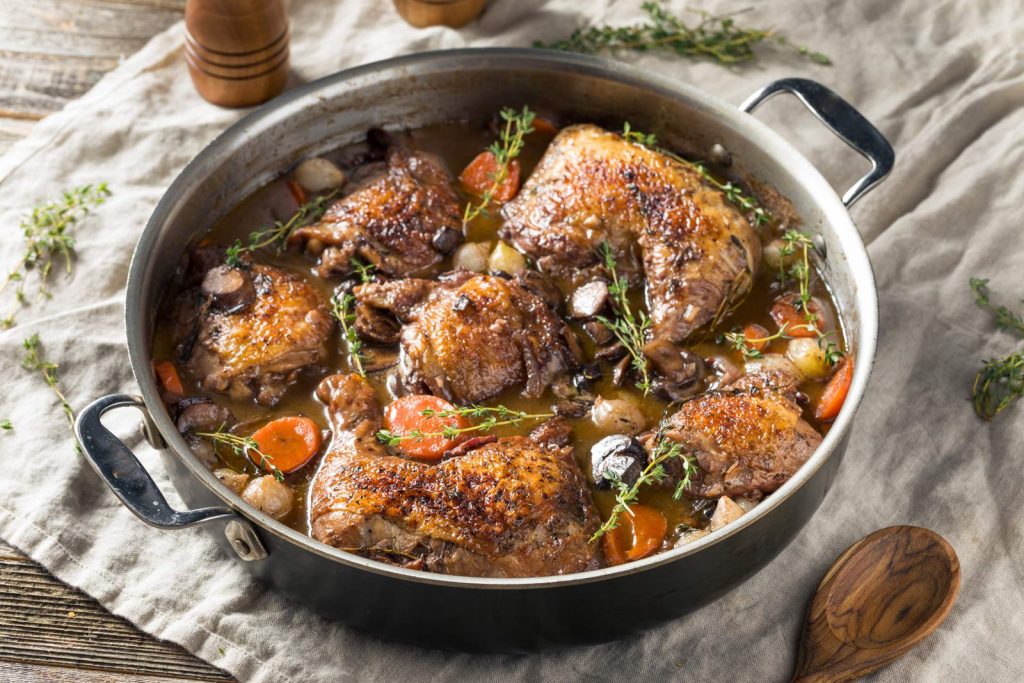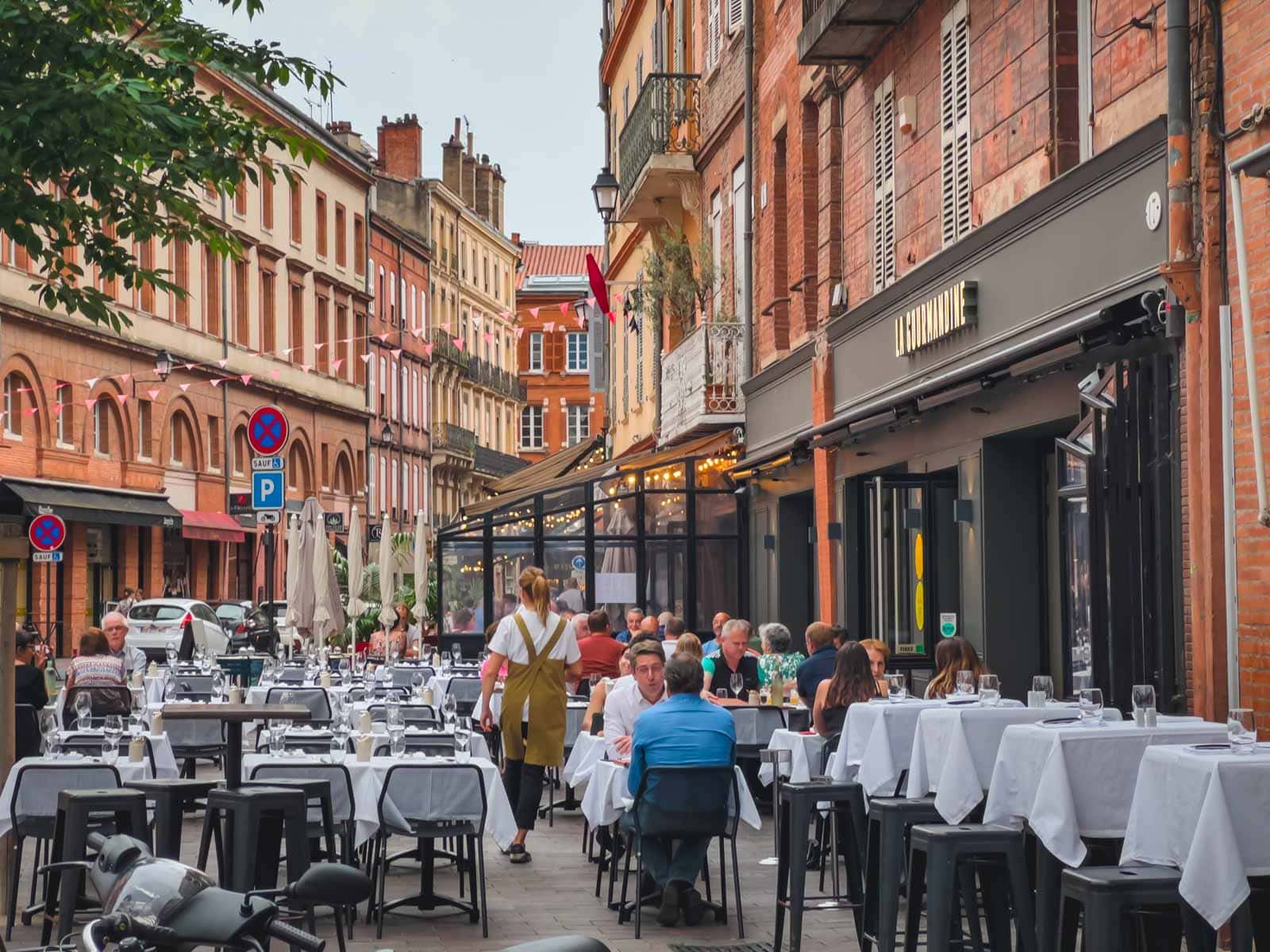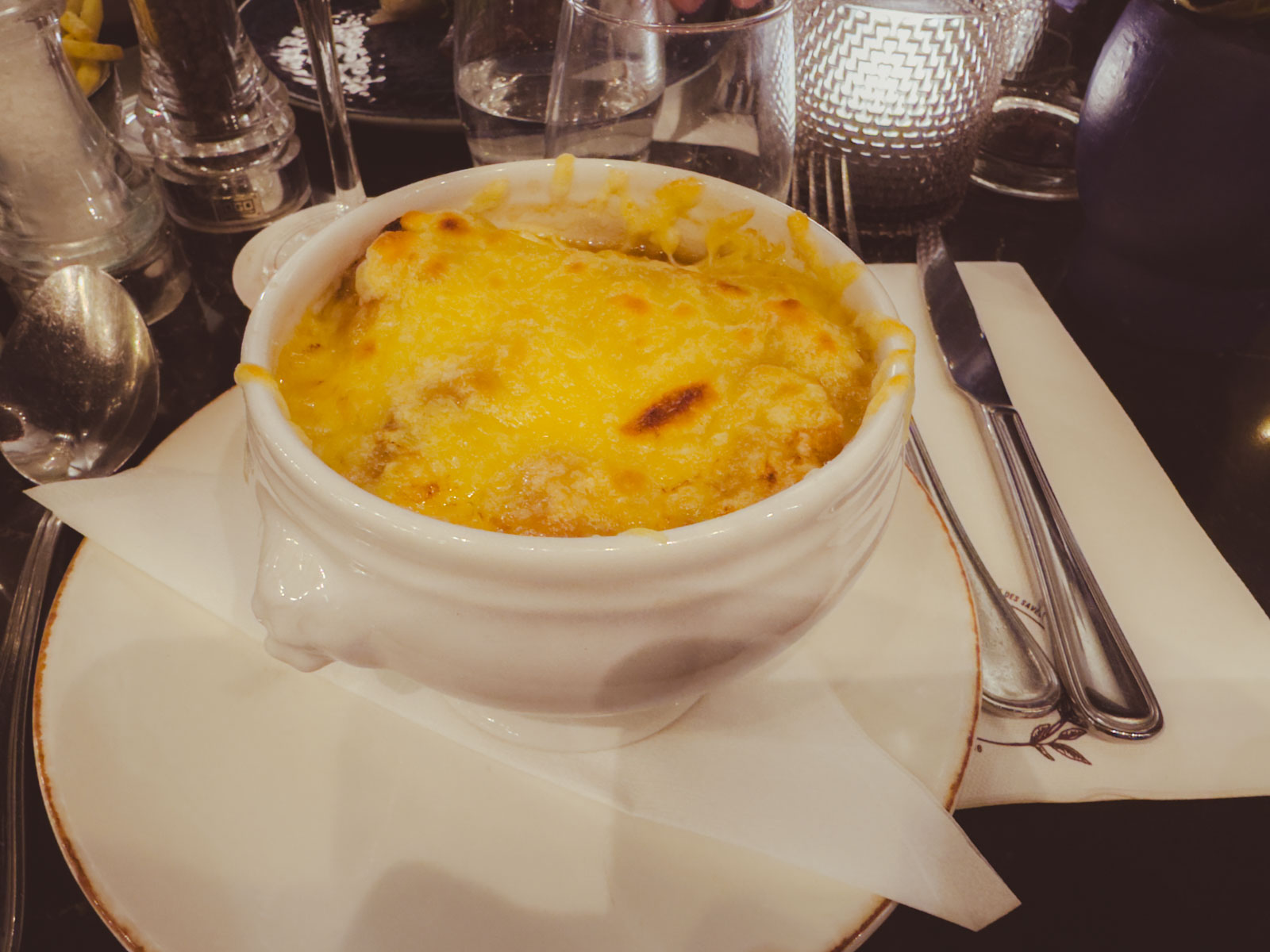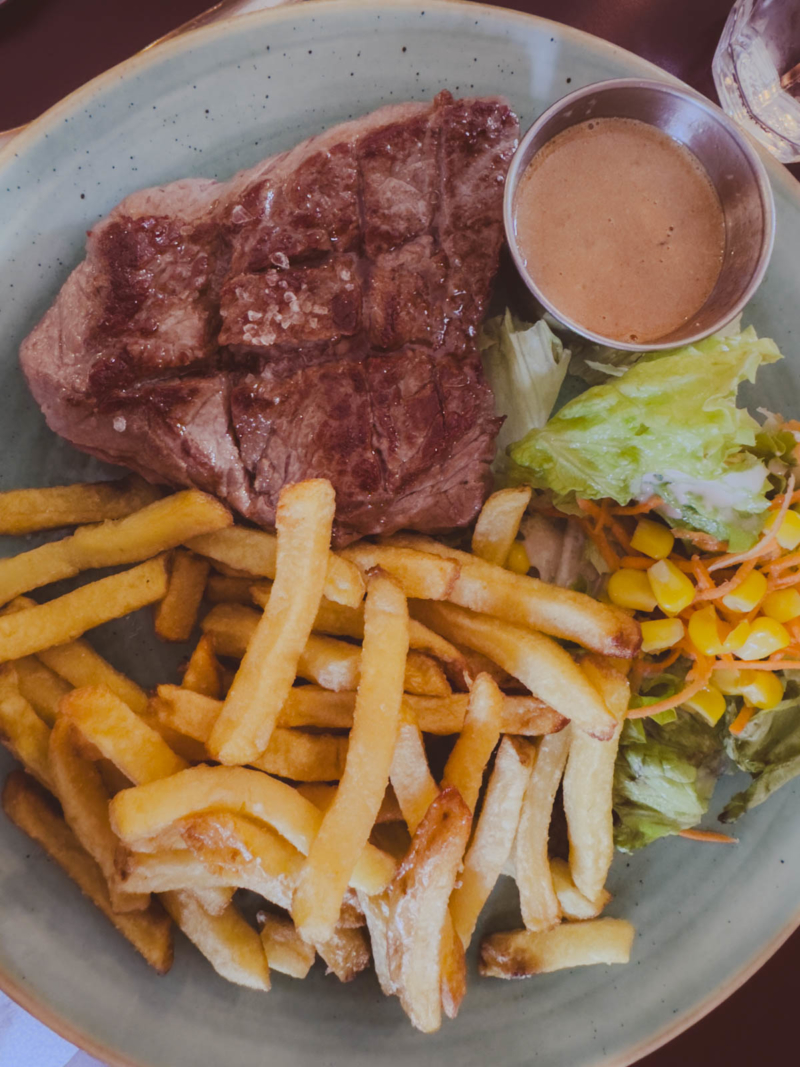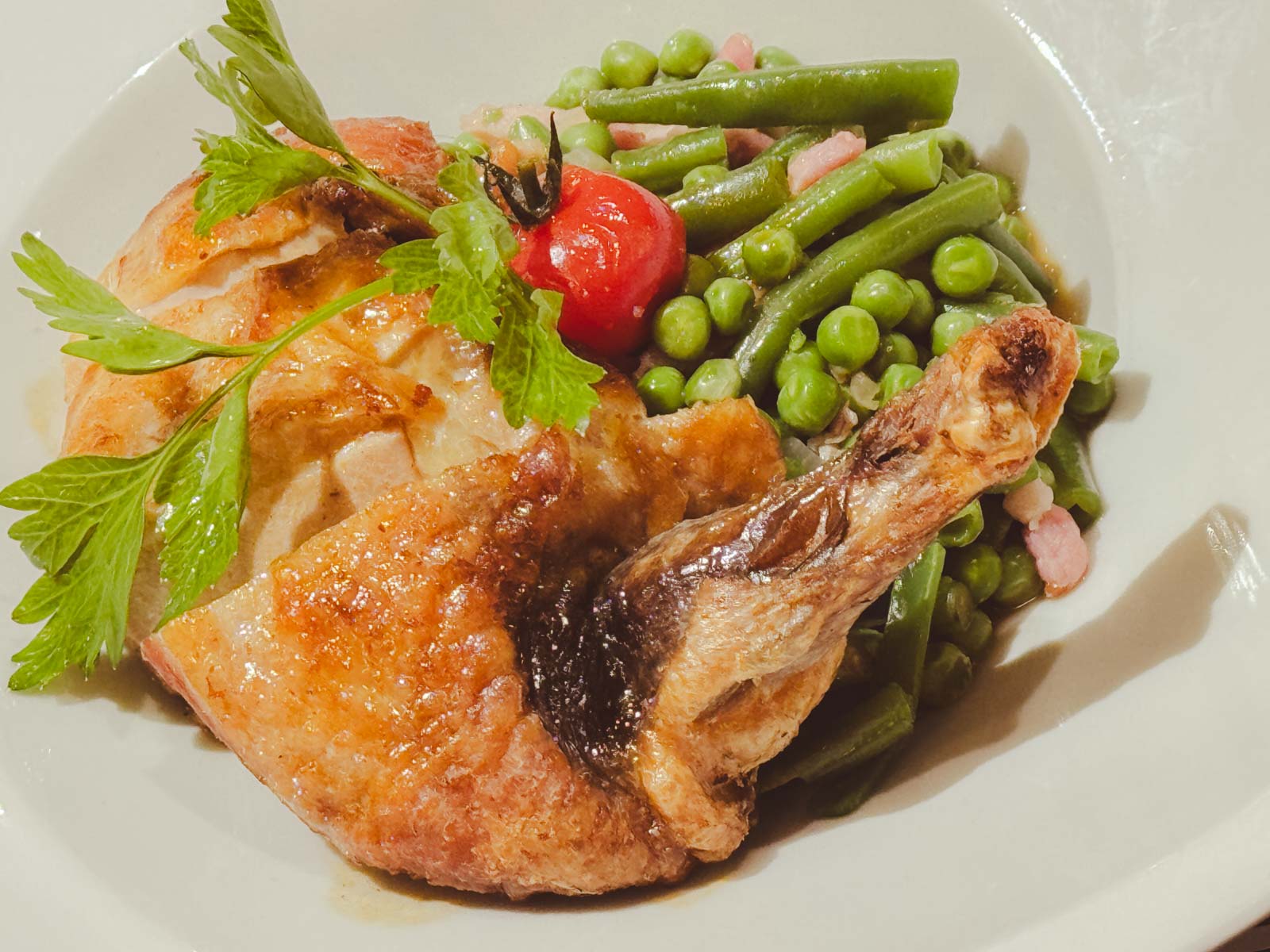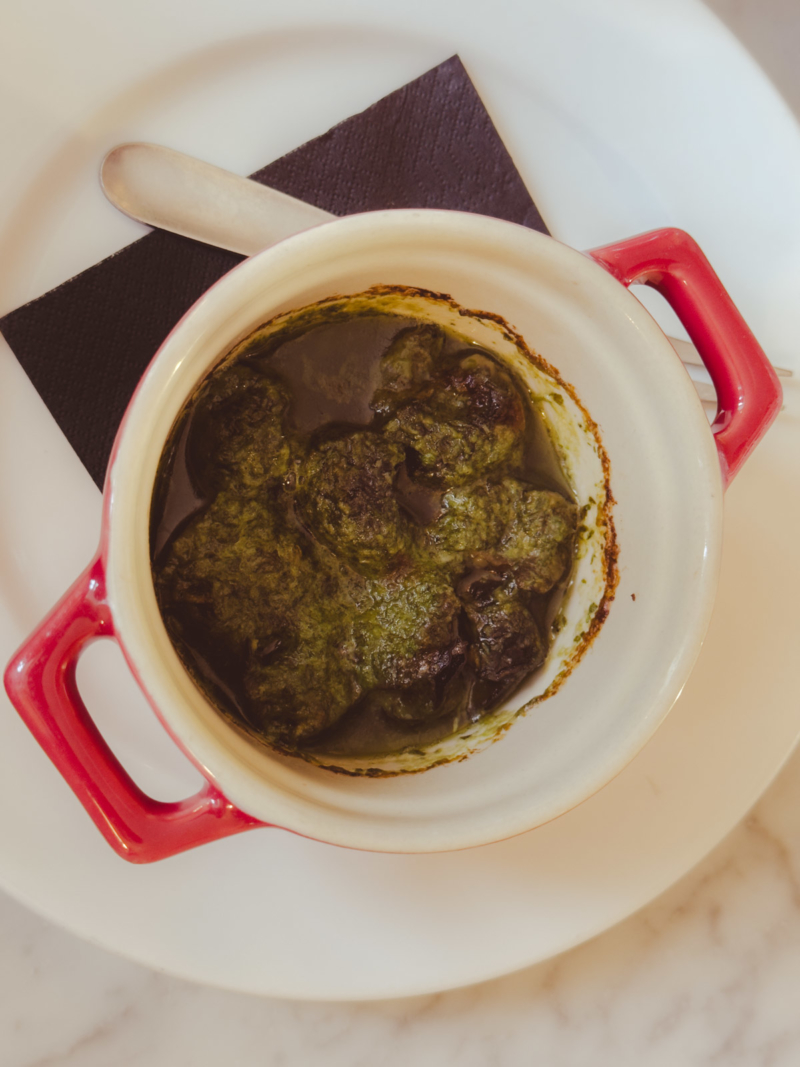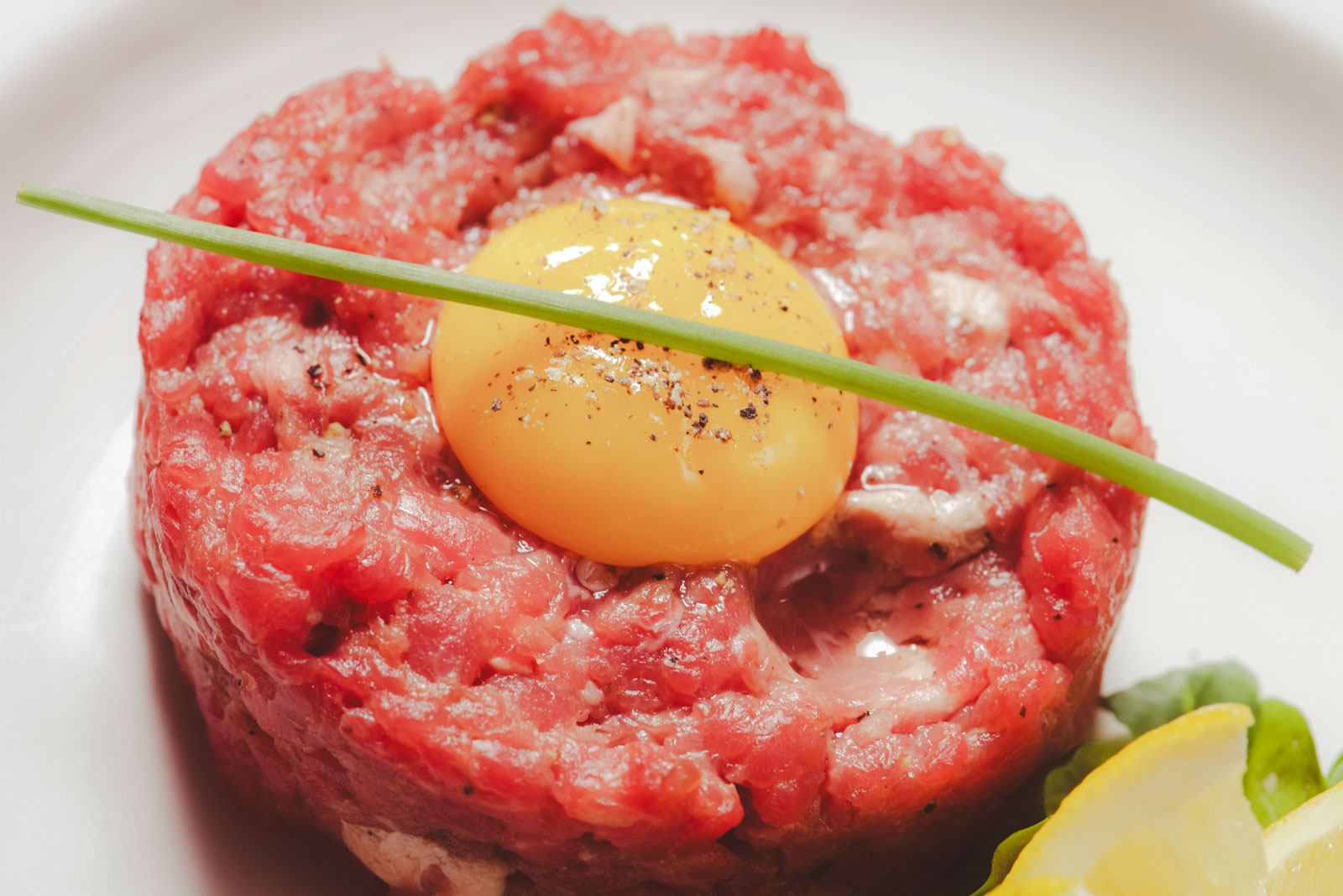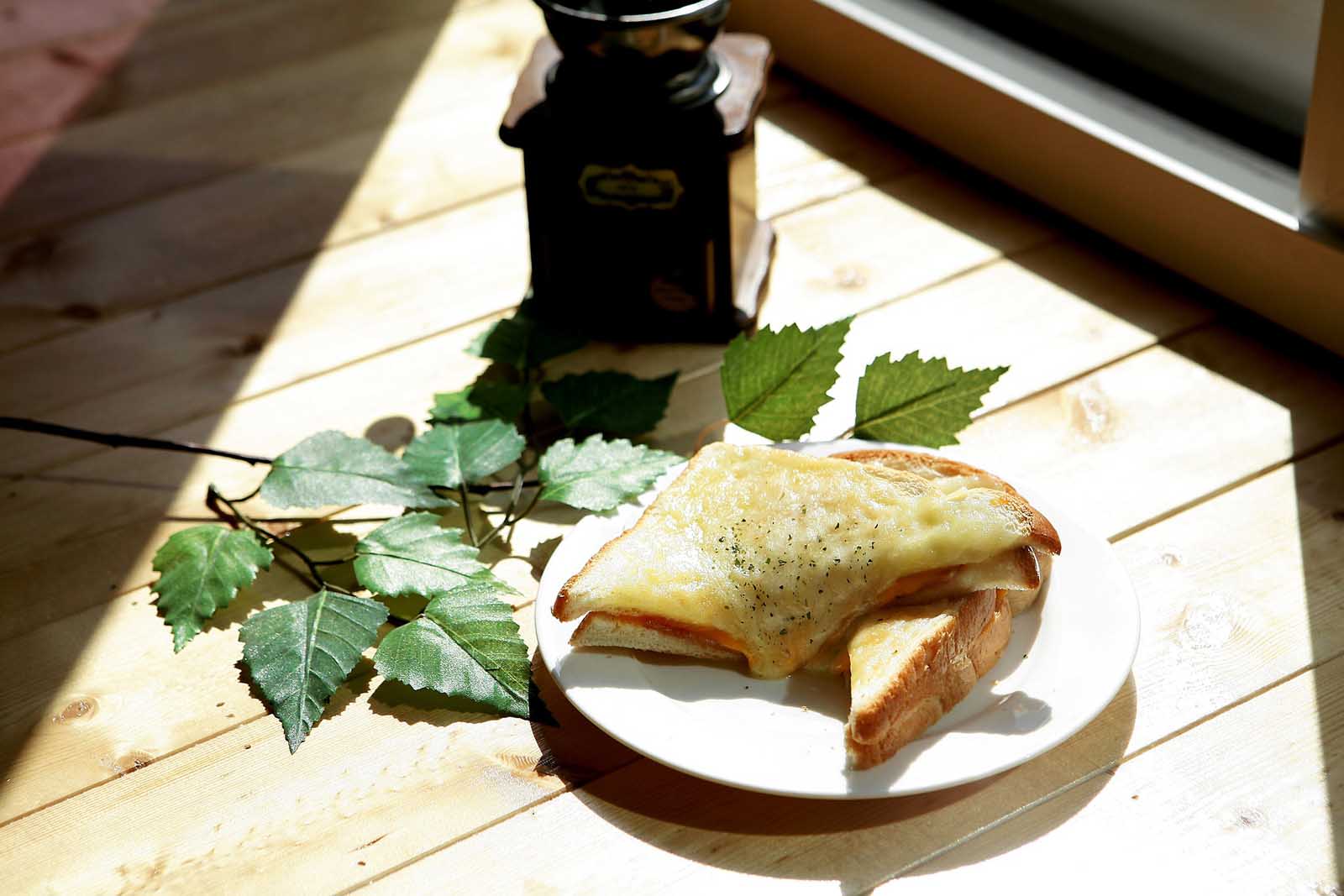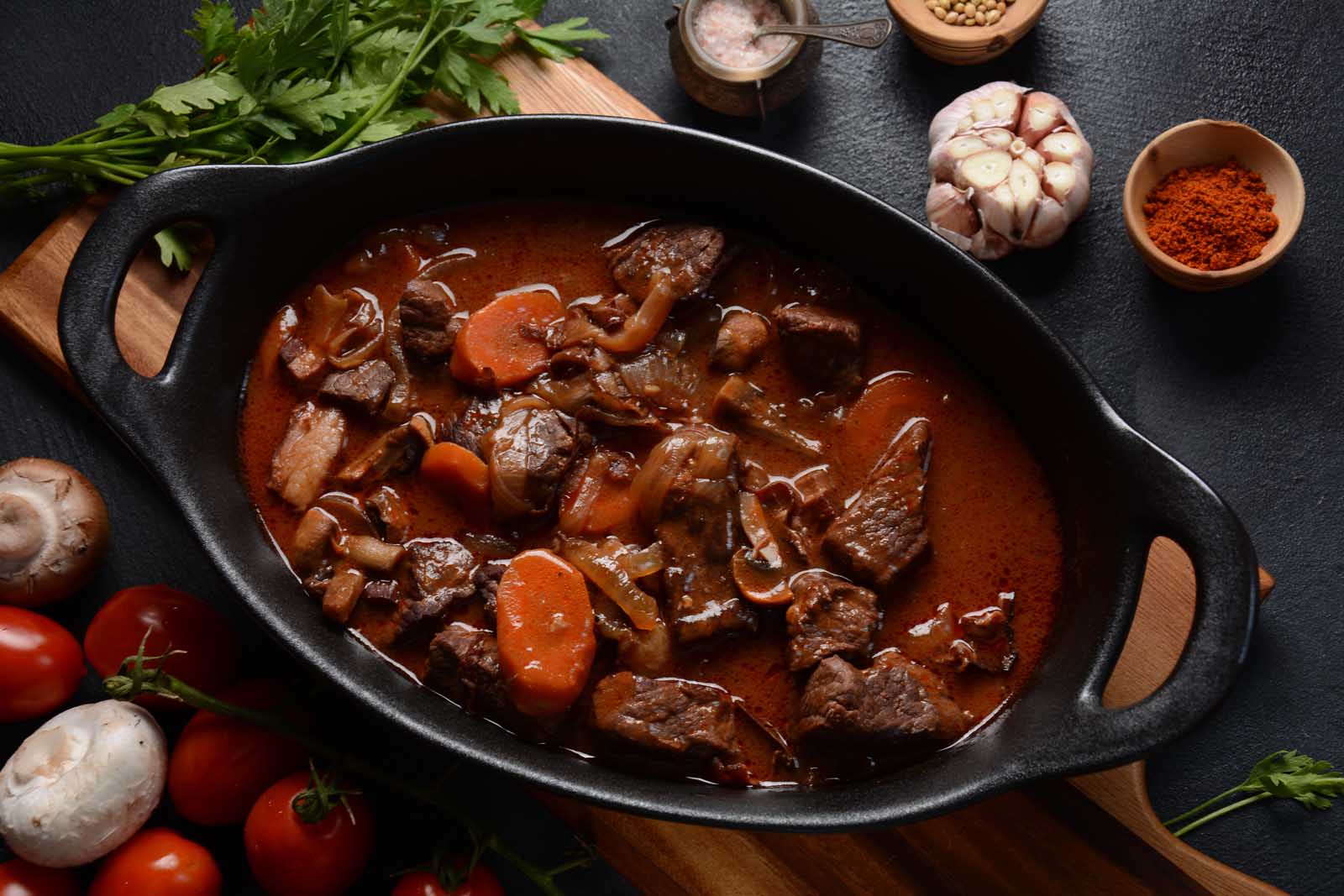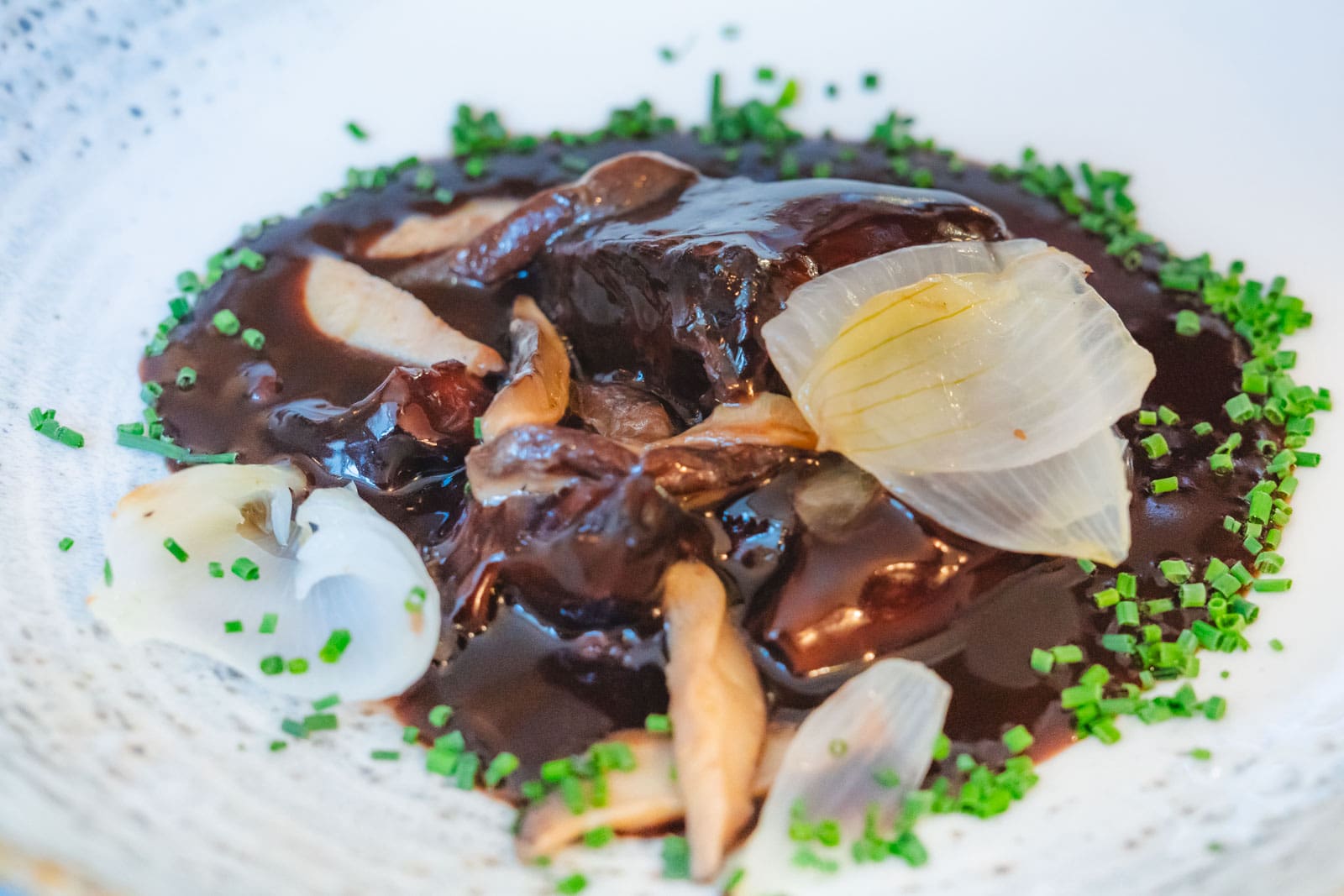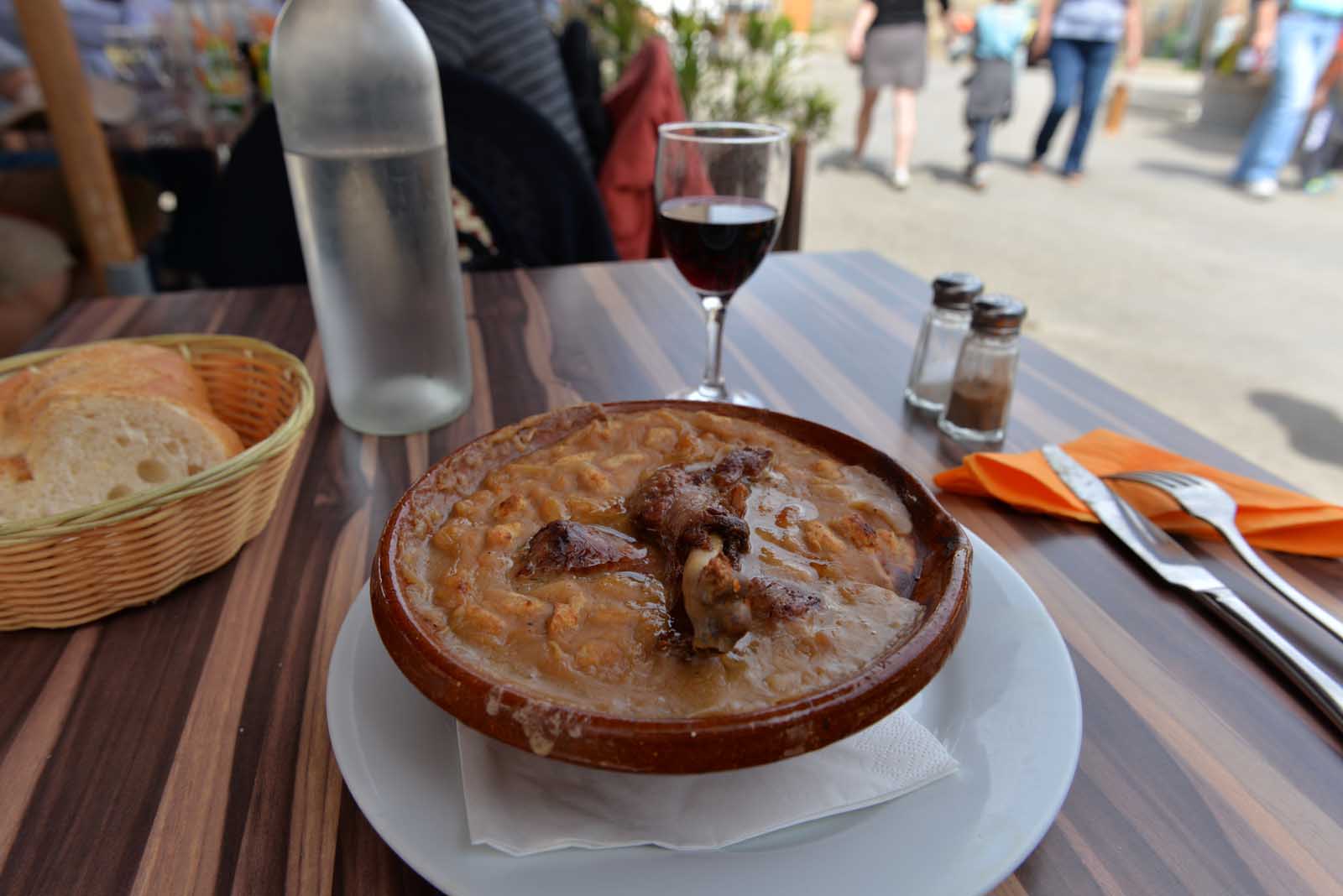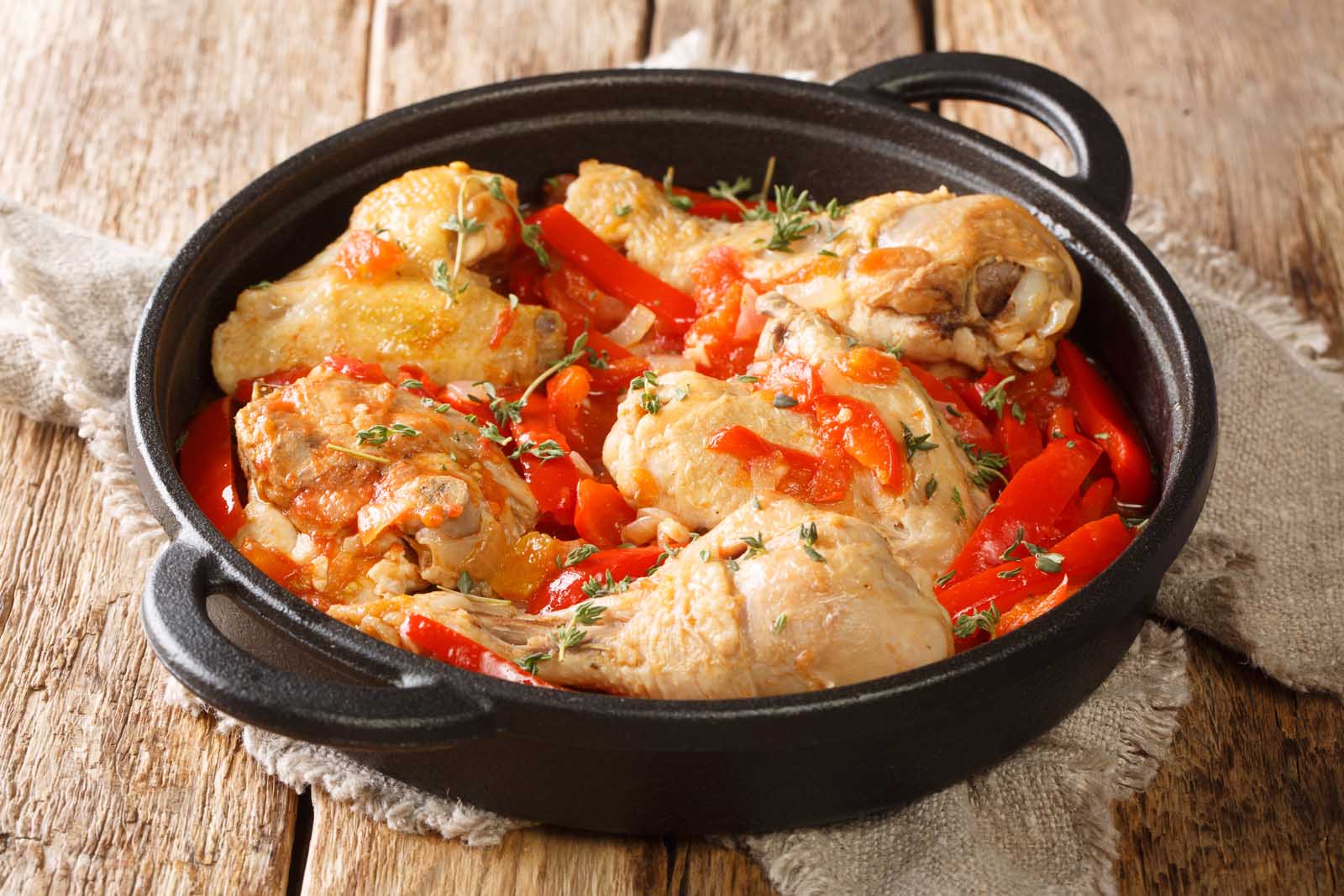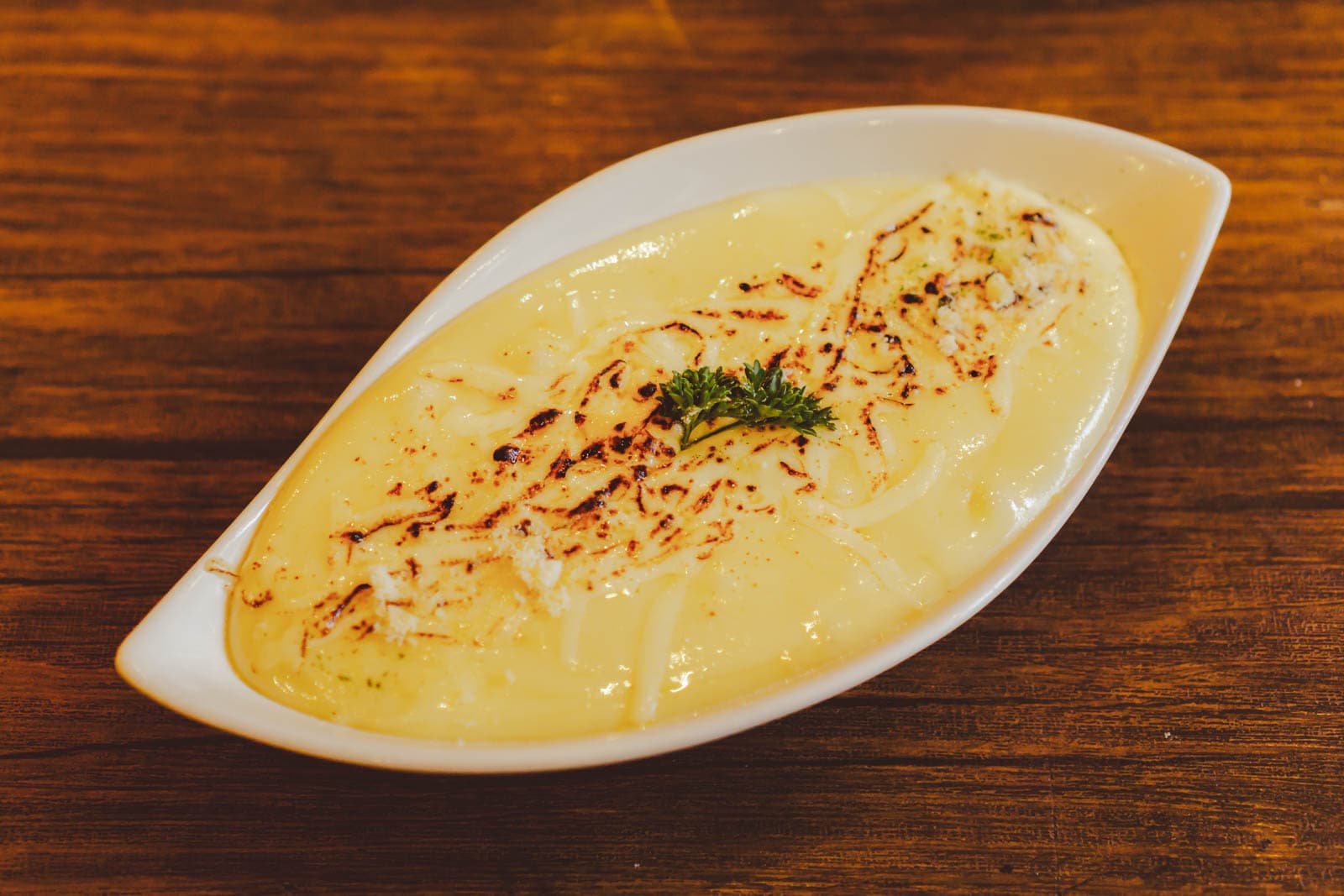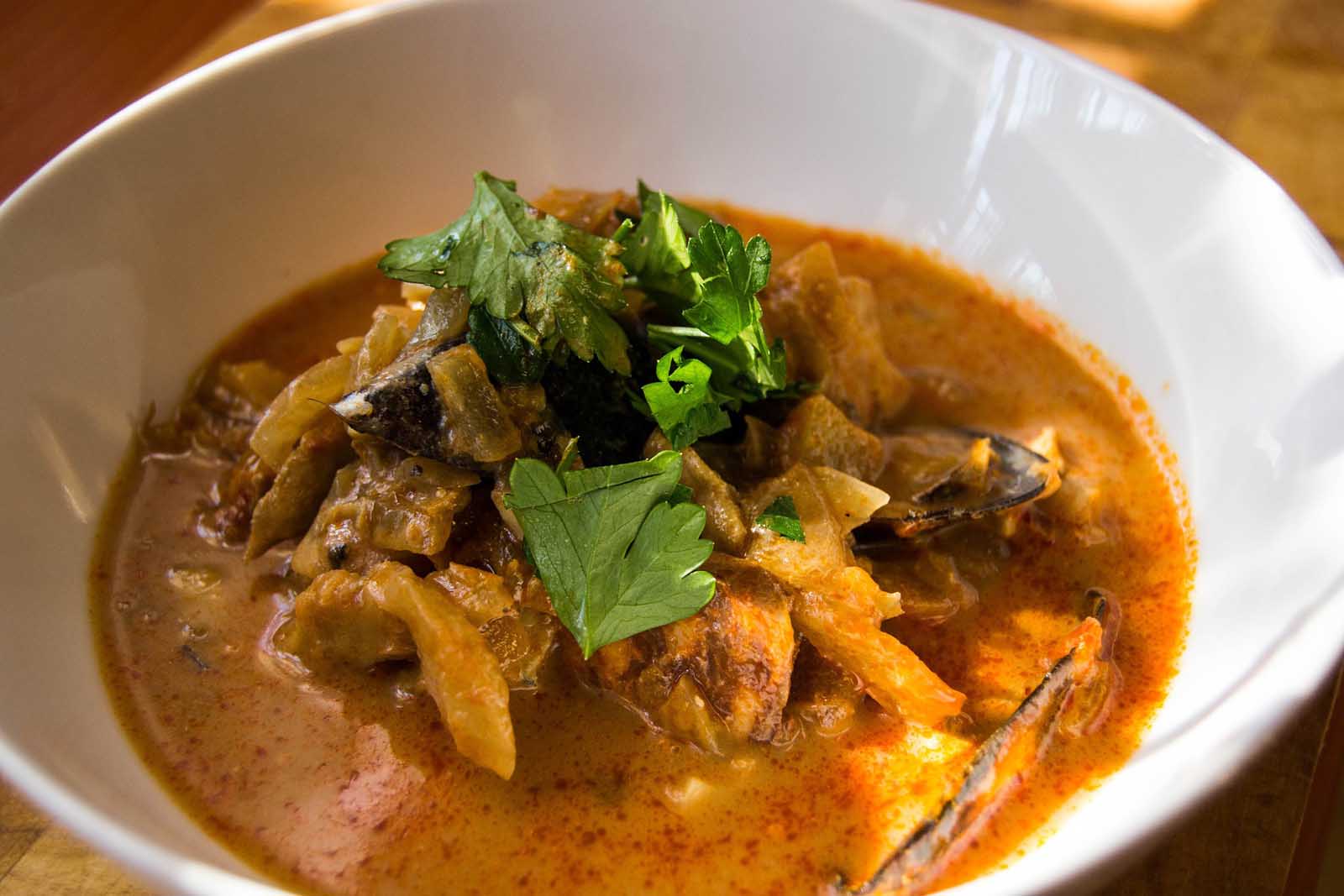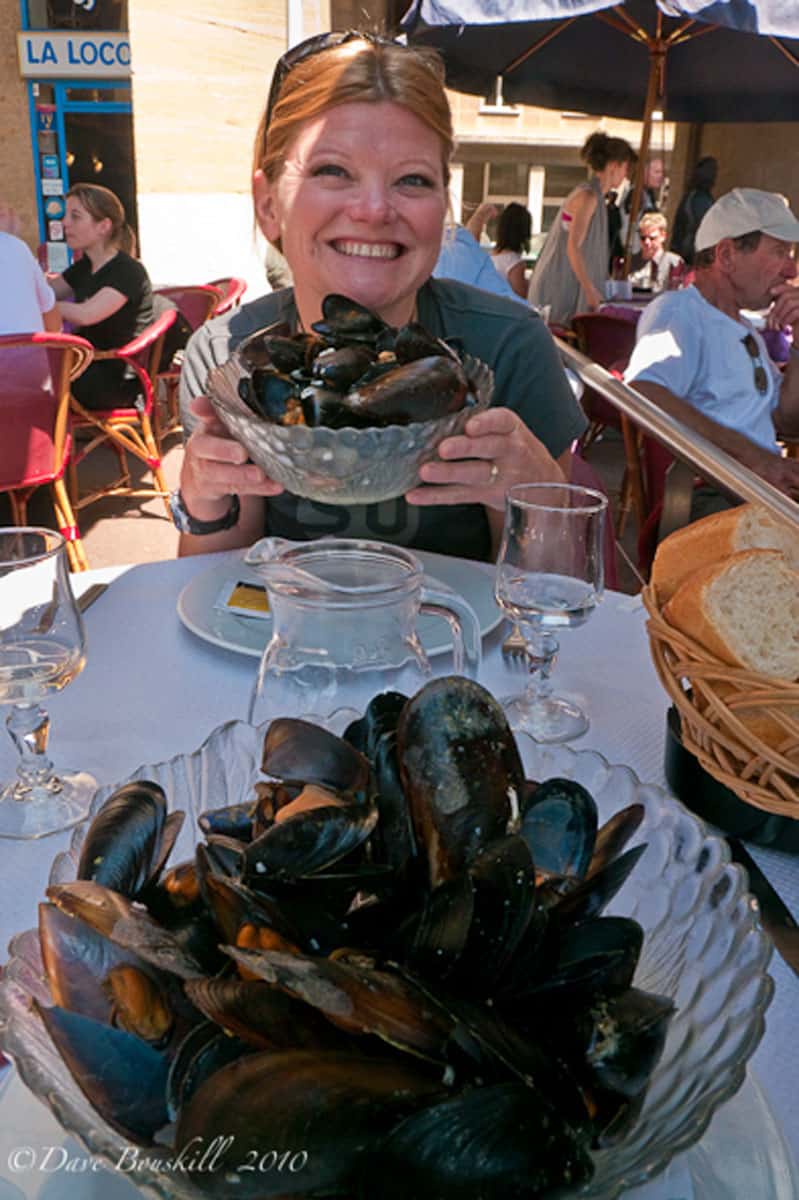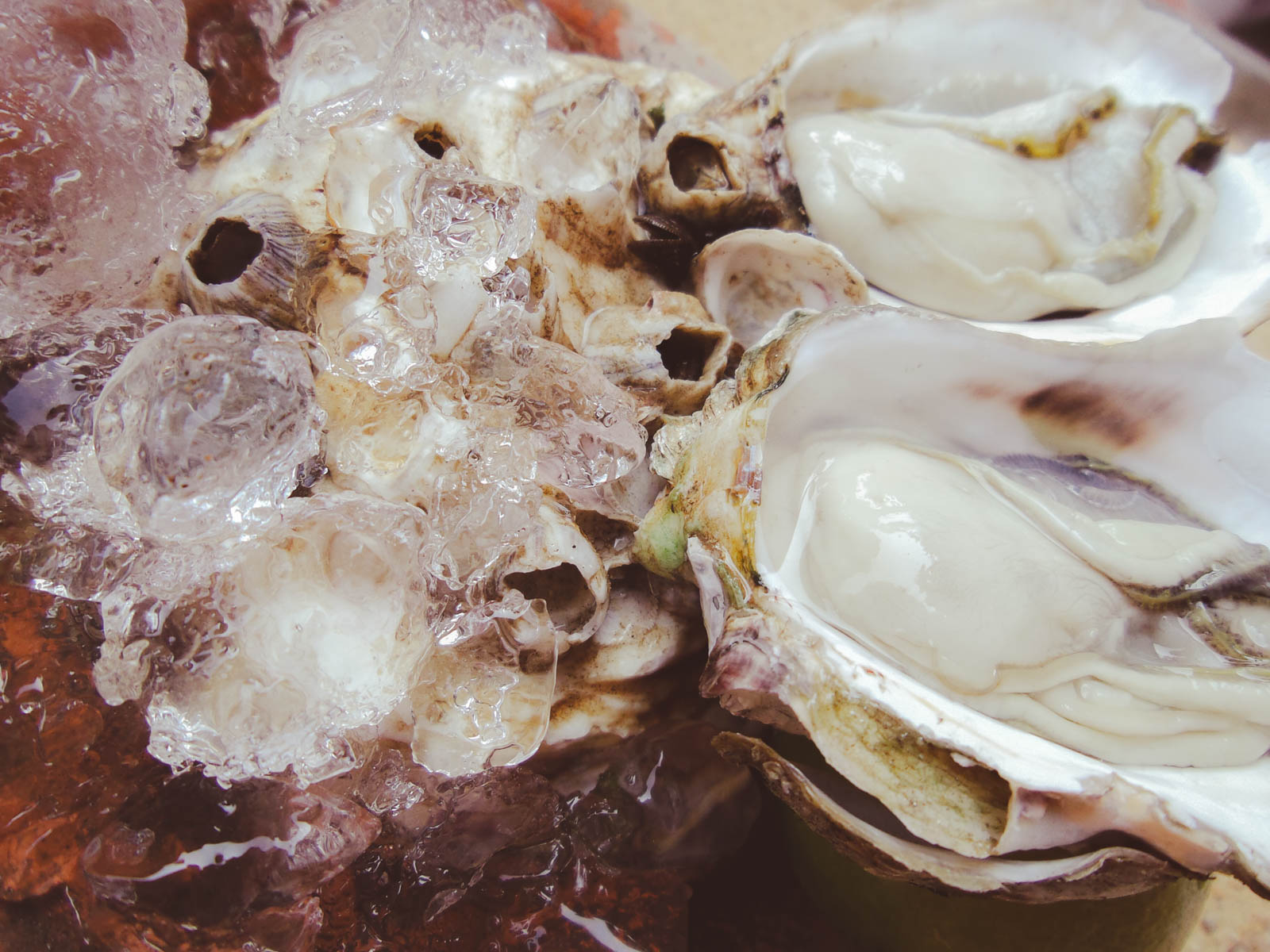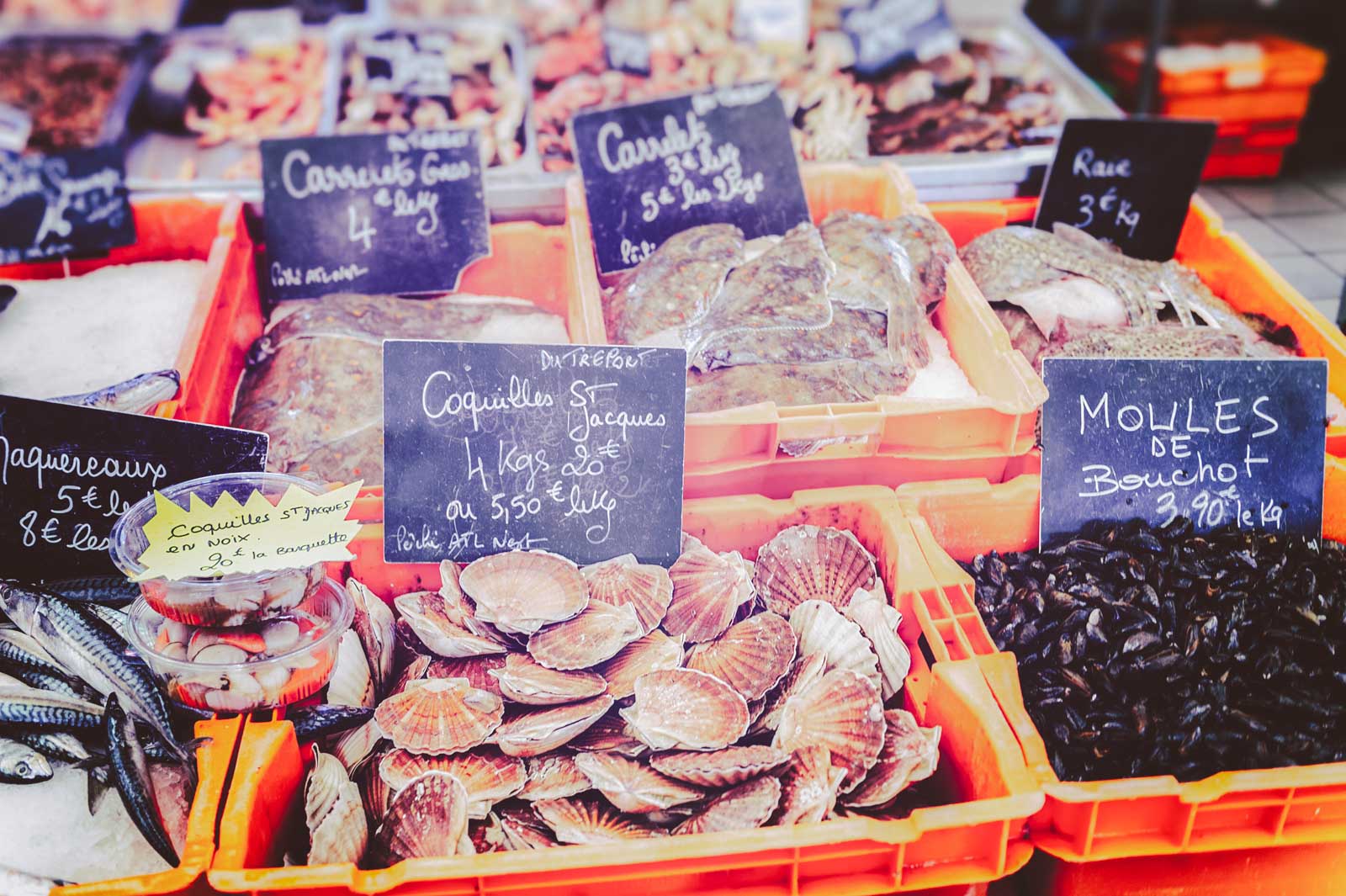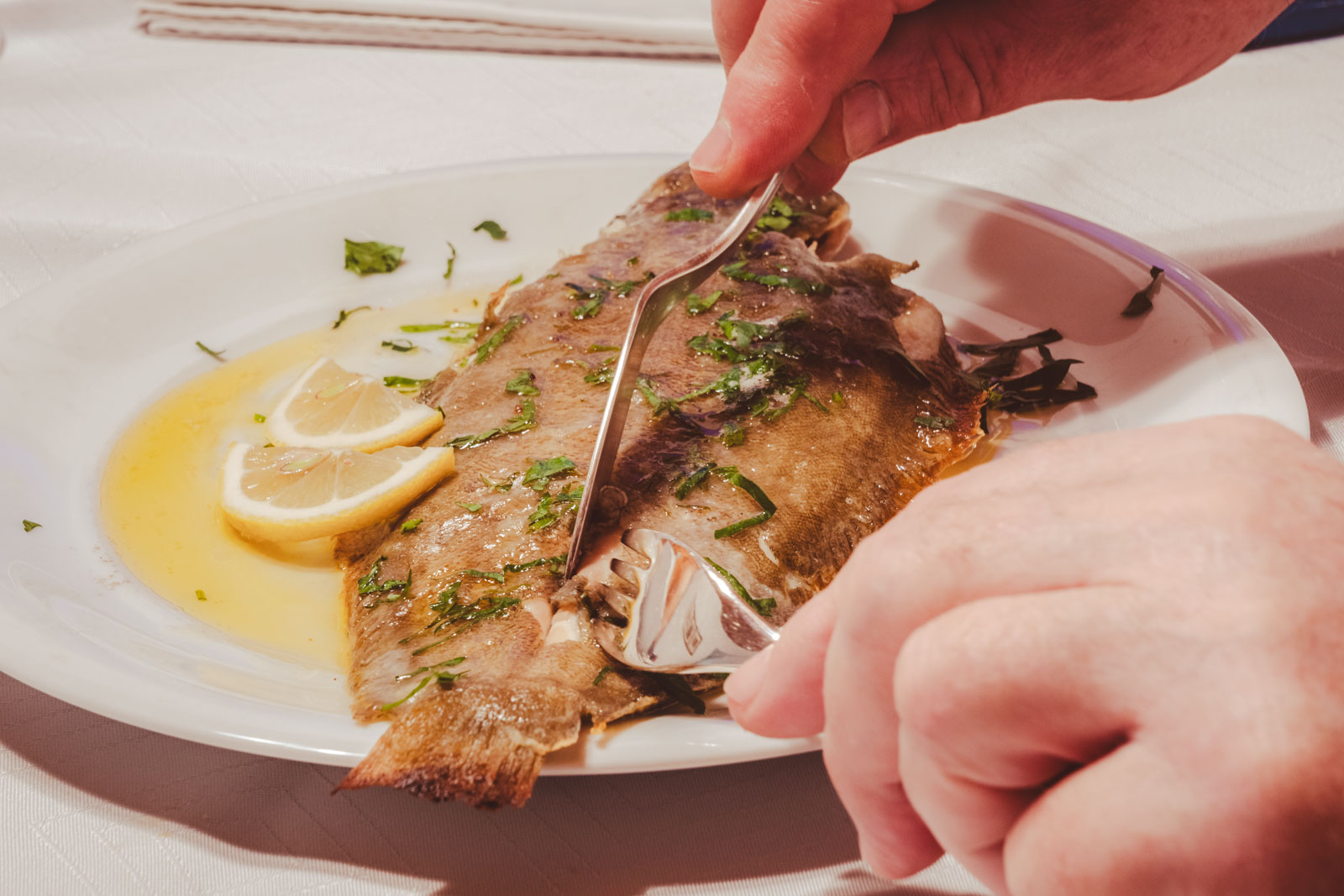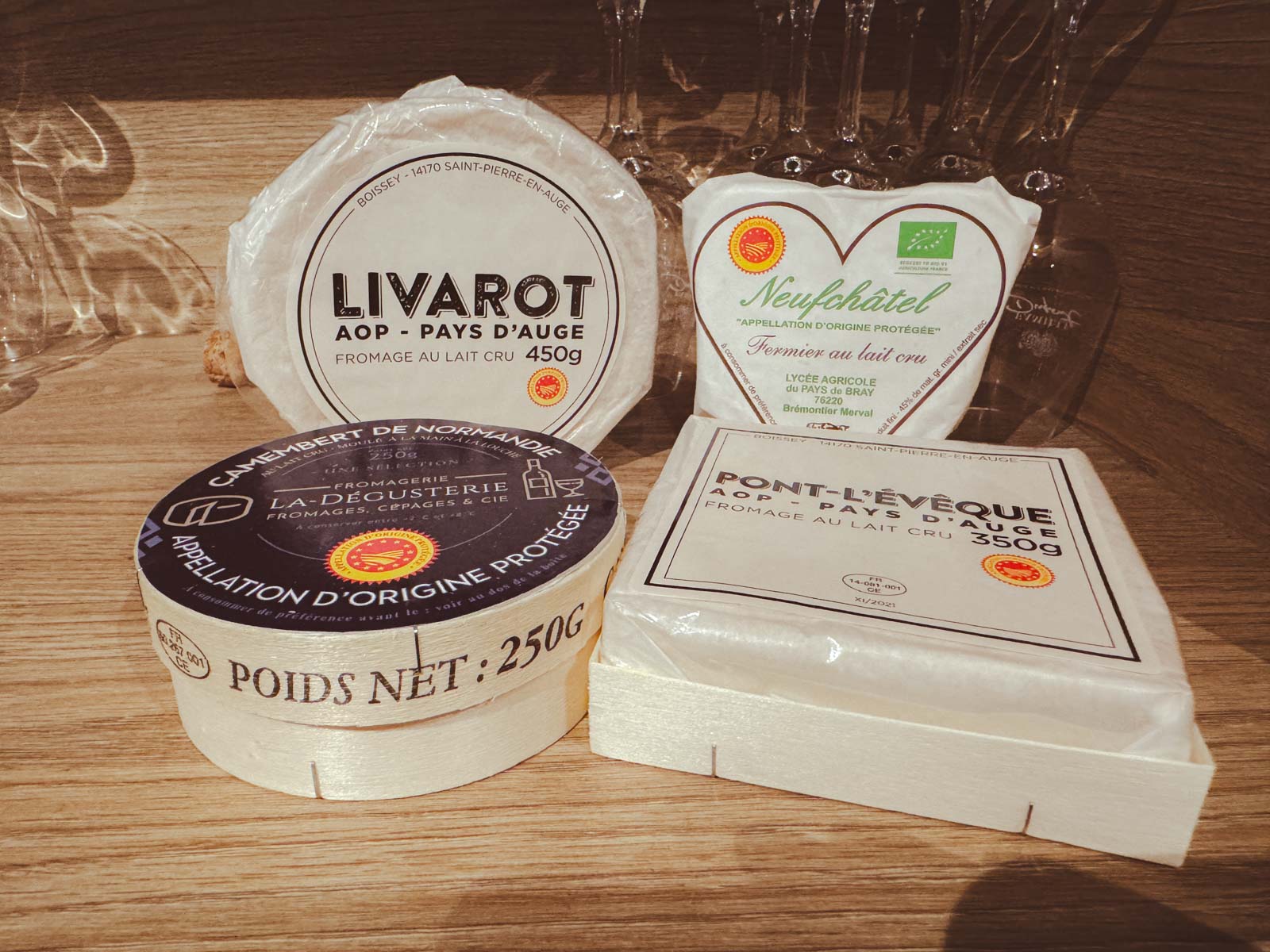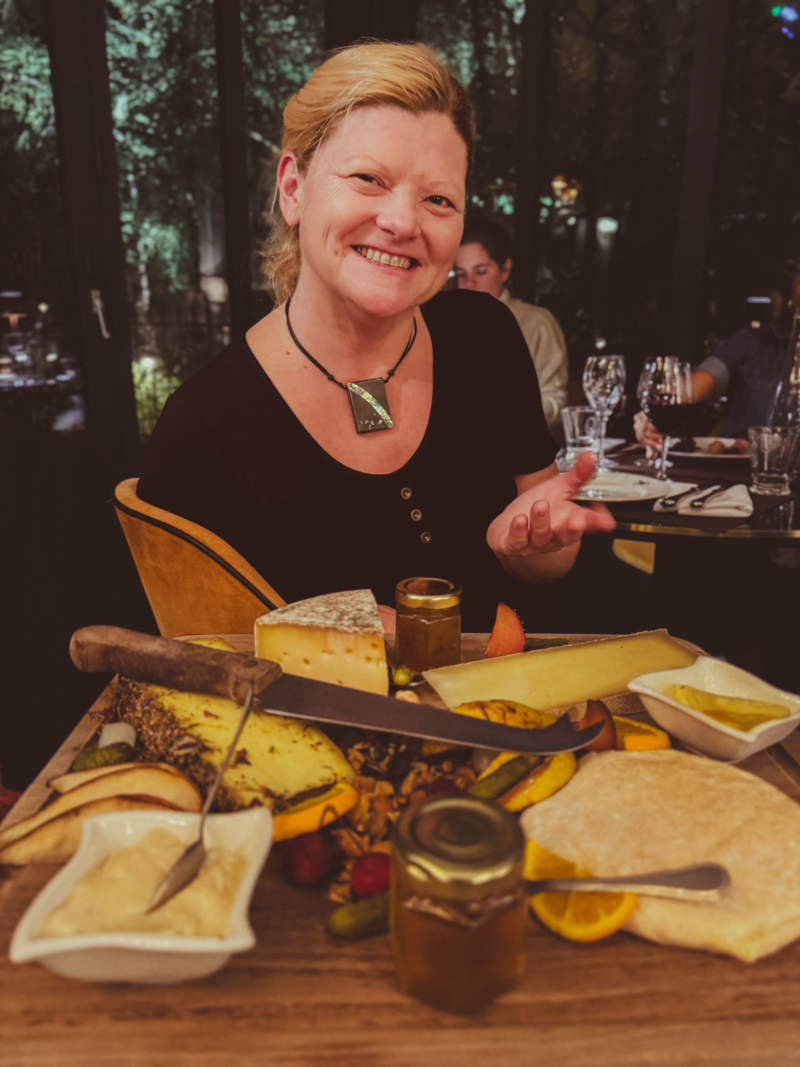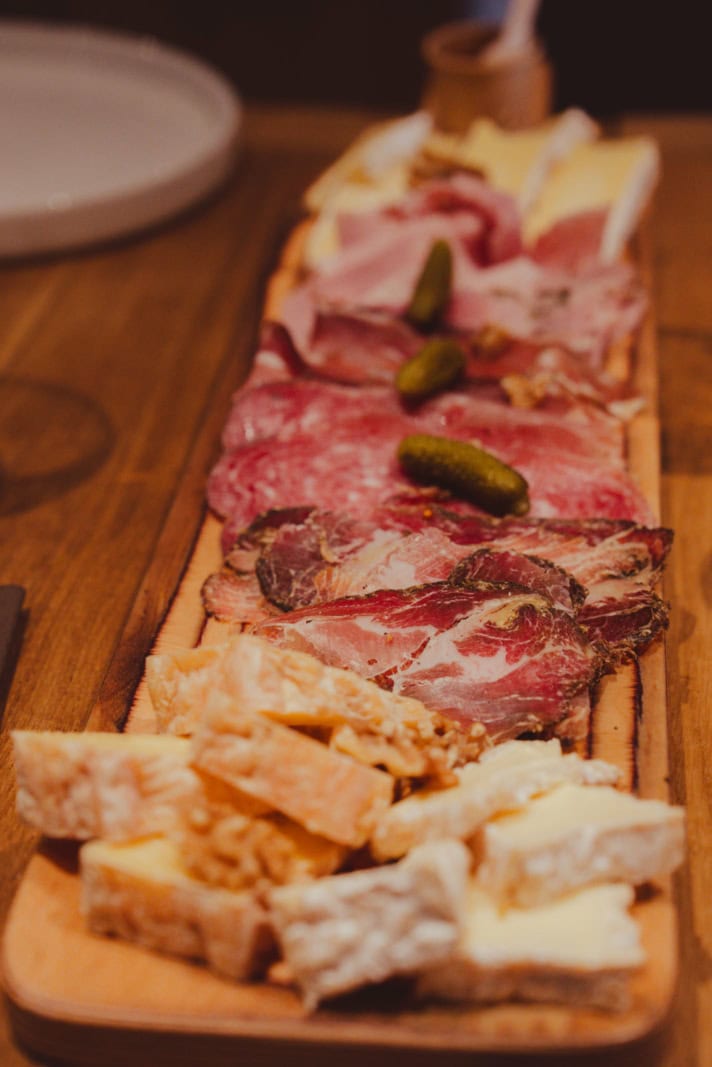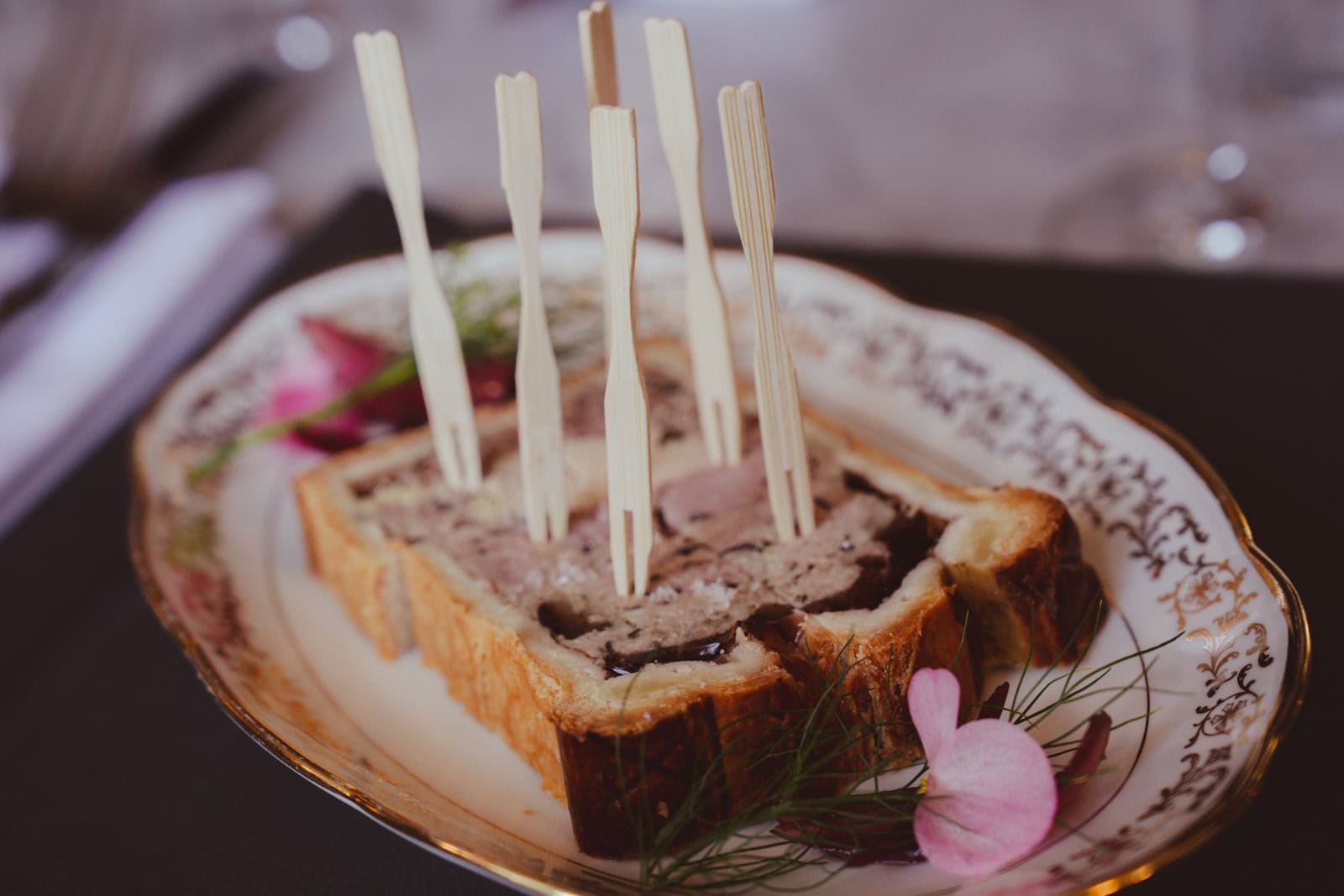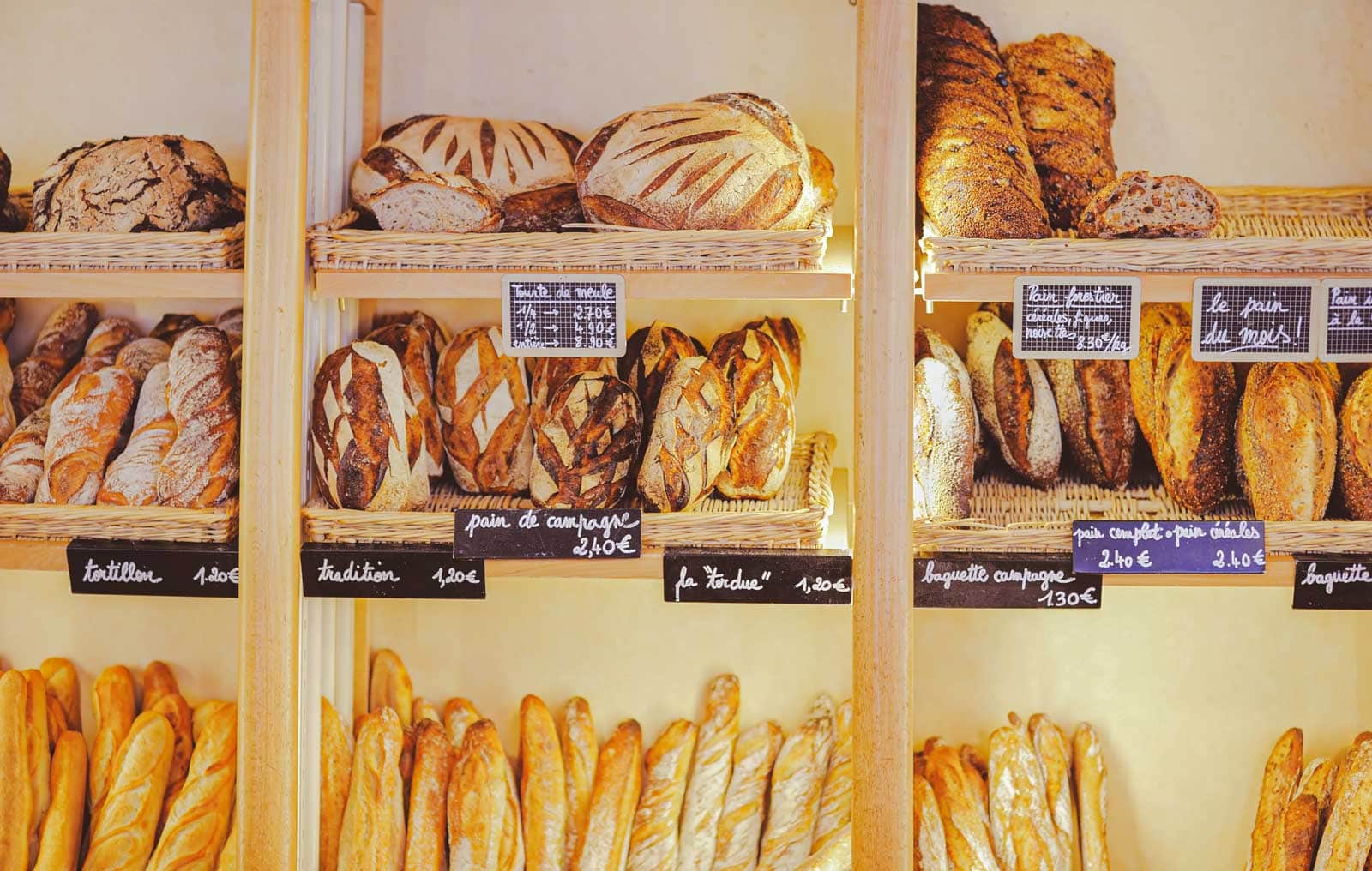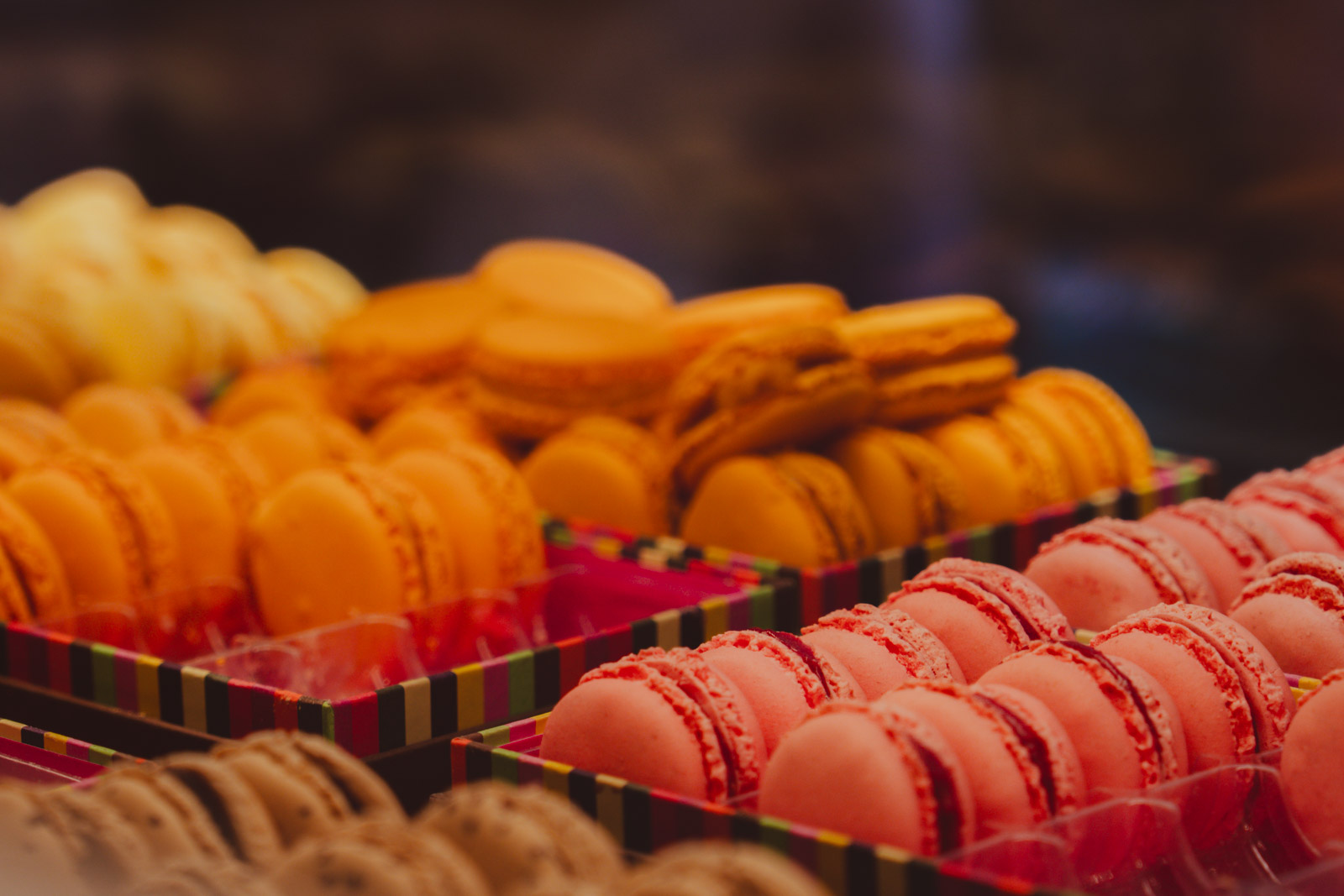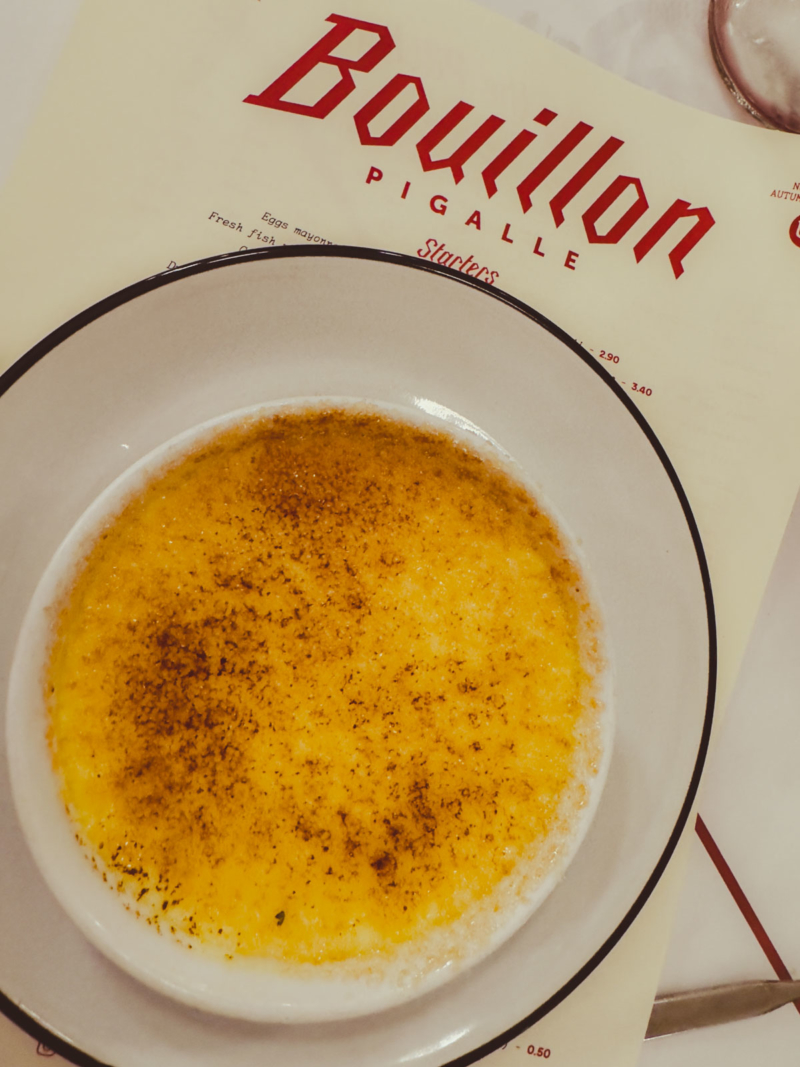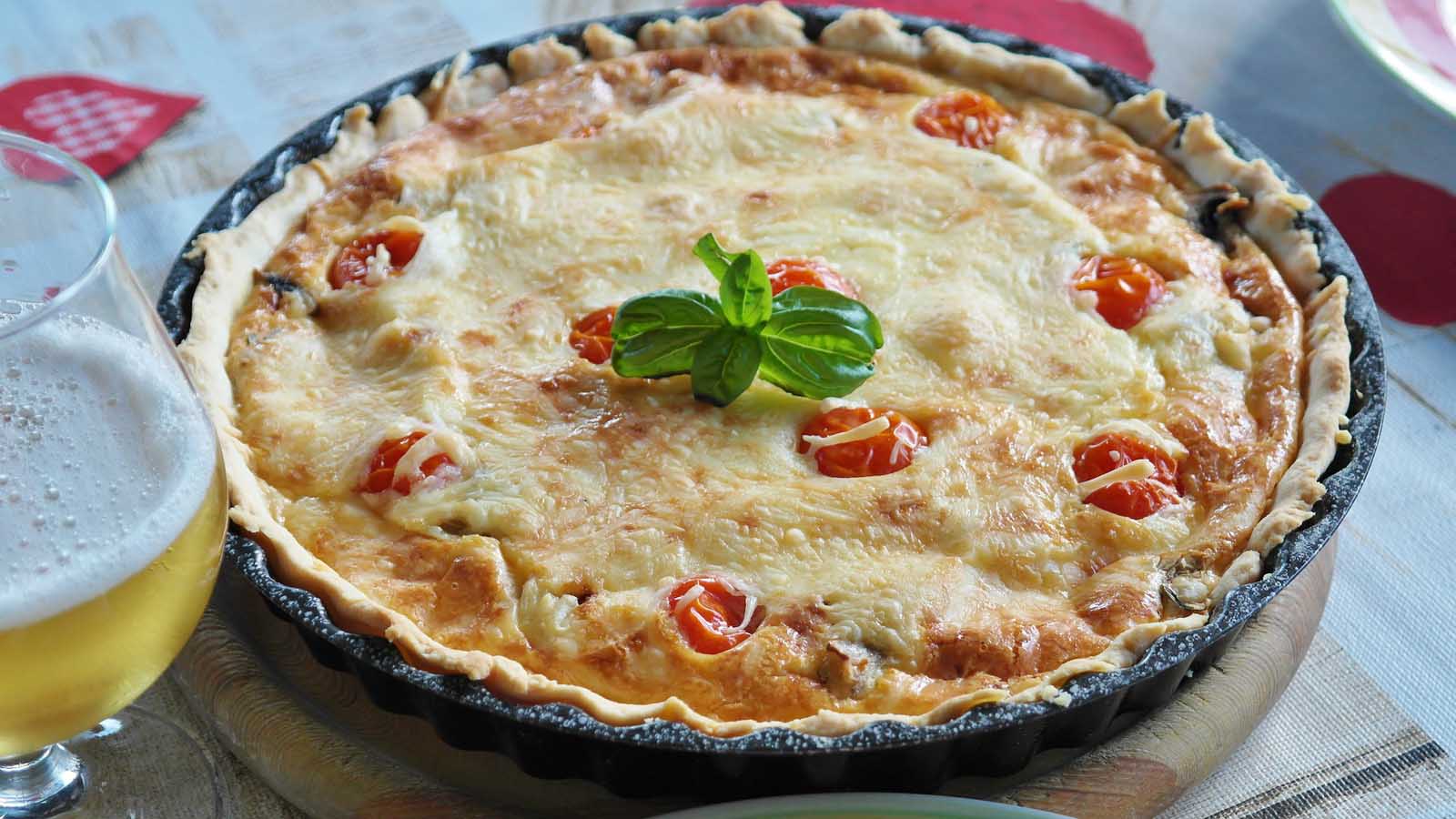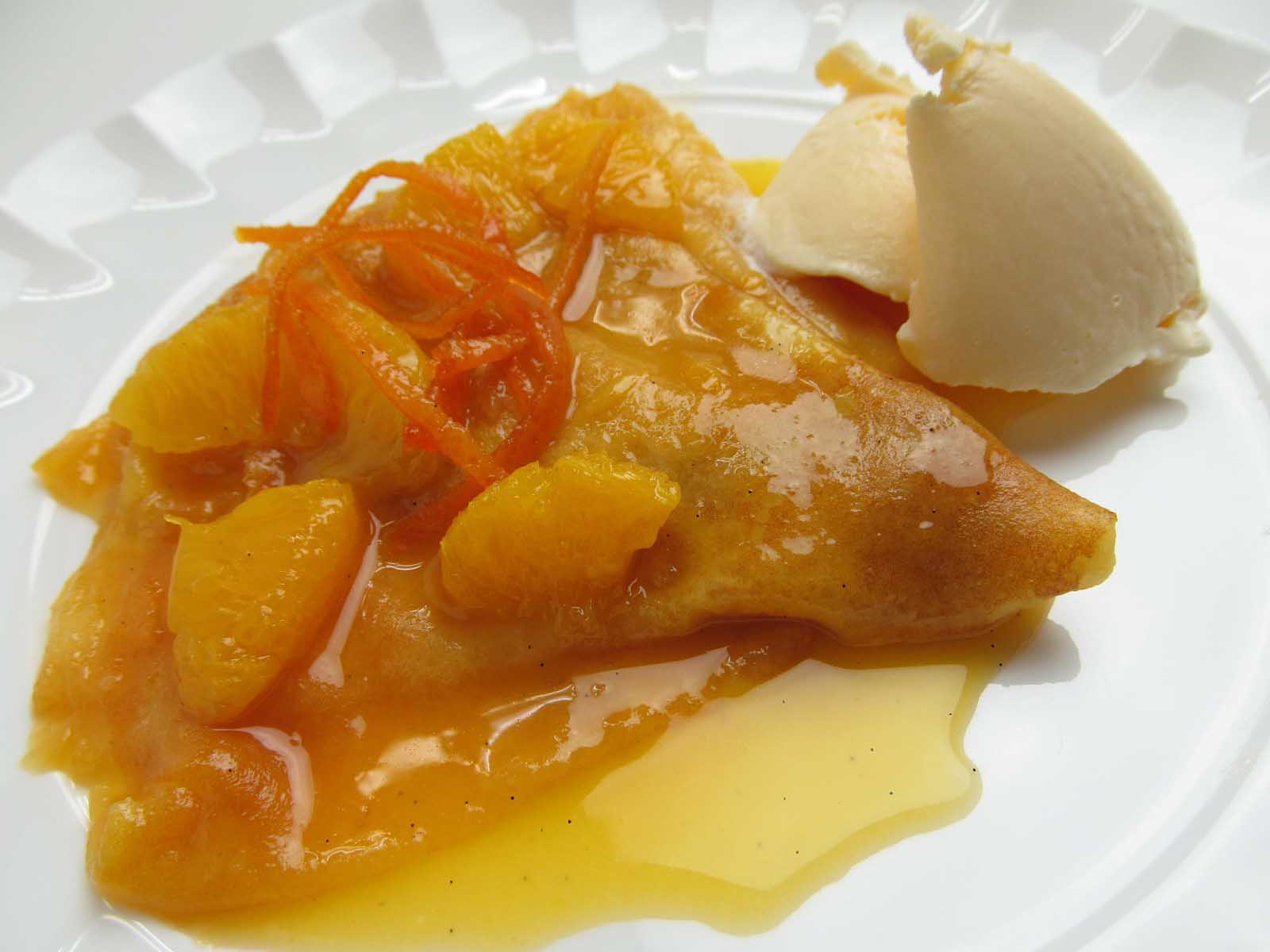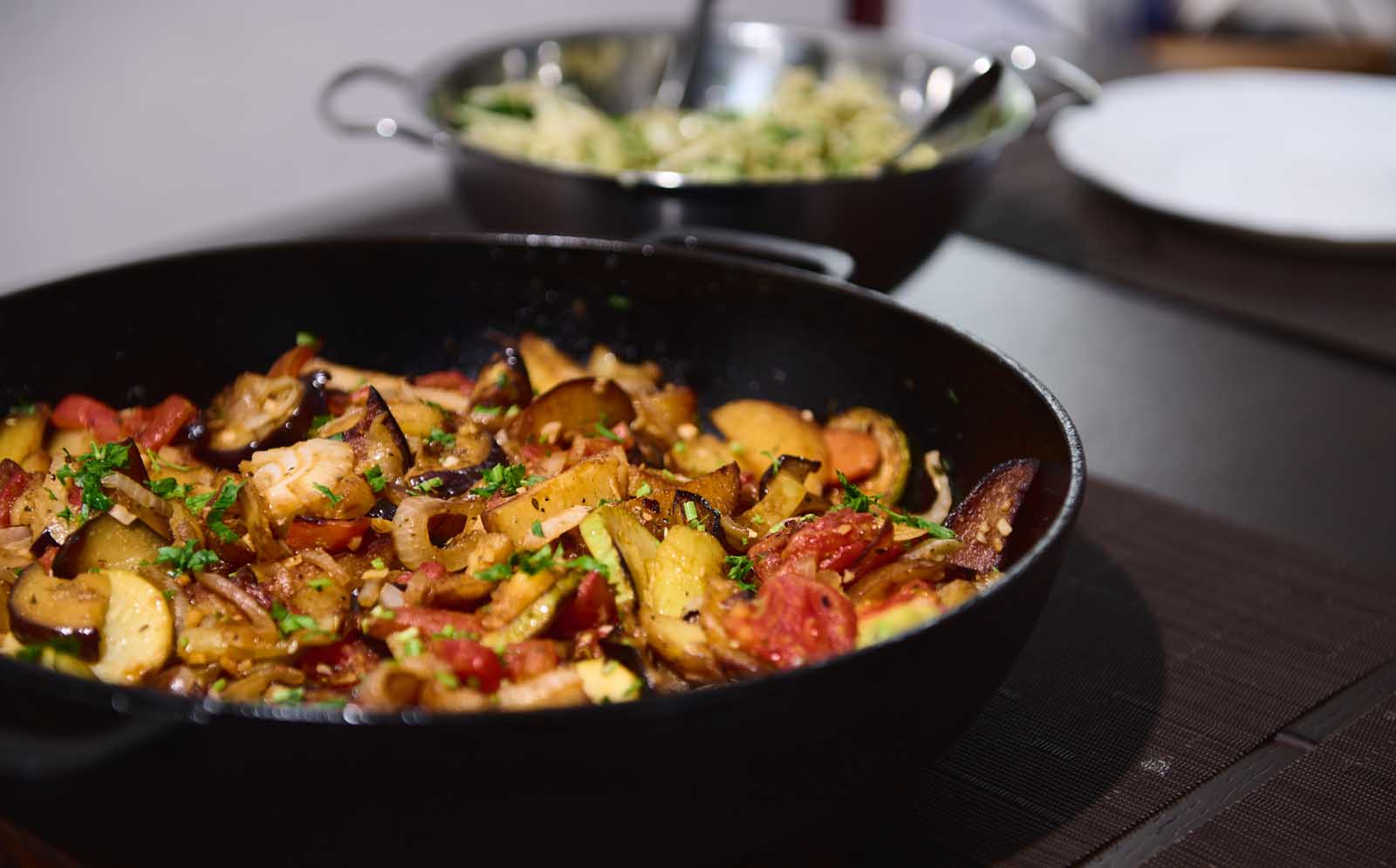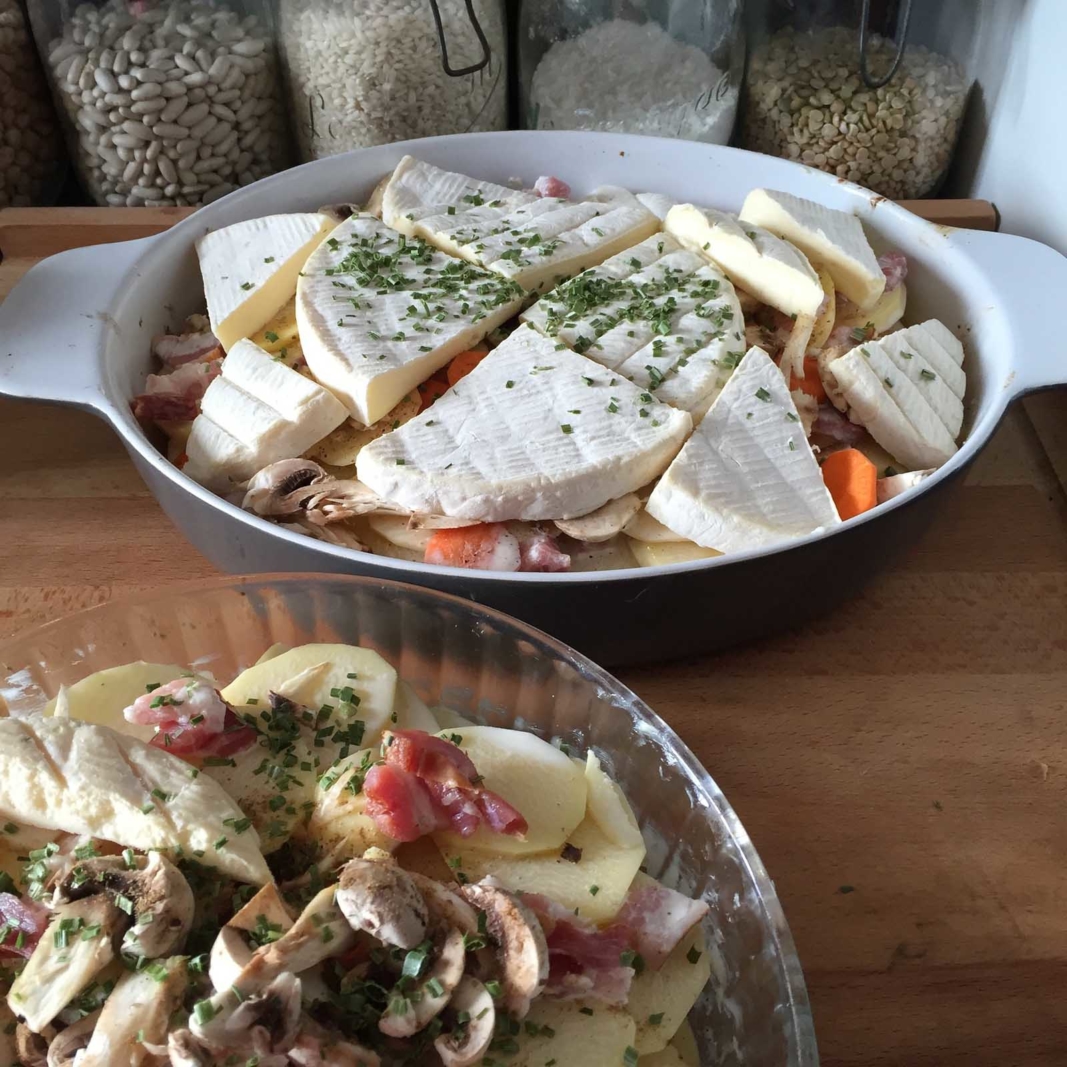We have eaten our way across France, from the bustling bistros of Paris to tiny, family-run auberges in the countryside, and we’ve learned one simple truth: French cuisine is more than just food. It’s a language of its own, a way of life woven into the fabric of every village, city, and home. It’s the ritual of a morning croissant, the ceremony of a multi-course dinner, and the simple joy of a perfect baguette.
This isn’t just a list of traditional French foods. This is our guide to the dishes we dream about, the ones we order the moment we land, and the flavours that define this incredible country.
We’ll share our personal stories, tips on where to find the best versions, and the know-how to help you navigate the menus with confidence. Prepare to taste the very best of French cooking.
Best French Foods To Try: A Quick Guide
For first-time visitors looking for the best food in France, here are the essential dishes to add to your list, broken down by category:
Top 5 Must-Try Dishes: If you only have time for a few, prioritize these: Boeuf Bourguignon, a classic Croissant from a local boulangerie, Steak Frites in a Parisian bistro, Duck Confit (Confit de Canard), and a simple, perfect Baguette.
Classic Main Courses:
Boeuf Bourguignon: Rich, slow-cooked beef stew in red wine.
Coq au Vin: Chicken braised in red wine with mushrooms and bacon.
Duck Confit: Crispy, succulent duck leg cooked in its own fat.
Cassoulet: Hearty white bean and meat casserole from the south.
From the Sea:
Bouillabaisse: The iconic saffron fish stew from Marseille.
Moules Frites: A steaming pot of mussels with a side of fries.
Huîtres (Oysters): Freshly shucked, especially from the Brittany coast.
Starters & Bistro Favorites:
Soupe à l’Oignon (French Onion Soup): Topped with crusty, cheesy bread.
Escargots de Bourgogne: Snails baked in garlic-parsley butter.
Quiche Lorraine: Savory tart with bacon, egg, and cream.
Foie Gras: A rich delicacy of duck or goose liver.
From the Boulangerie & Pâtisserie (Bakery & Pastry Shop):
Baguette & Croissant: The essential daily breads and pastries.
Macarons: Delicate almond meringue cookies with various fillings.
Crème Brûlée: Creamy custard with a crackly burnt sugar top.
Tarte Tatin: An upside-down caramelized apple tart.
Cheese & Alpine Specialties:
A Cheese Plate (Fromage): Featuring cheeses like Comté, Roquefort, or Brie.
Raclette & Tartiflette: Molten cheese dishes perfect for winter.
Before You Eat: Understanding French Dining Culture
Navigating a French restaurant for the first time can feel intimidating, but a few key pointers will make you feel like a local.
How to Read the Menu:
Entrée: This means starter or appetizer, not the main course.
Plat: This is the main course.
Dessert: Dessert.
Formule or Prix-Fixe: This is a set menu, often for lunch, offering excellent value. It usually includes two or three courses (e.g., entrée + plat or entrée + plat + dessert) for a fixed price.
Plat du Jour: The dish of the day, usually fresh, seasonal, and a specialty of the chef.
Essential Dining Phrases:
“Bonjour/Bonsoir“: Always greet the staff when you enter.
“Je voudrais…” (zhuh voo-dray): “I would like…”
“L’addition, s’il vous plaît” (lah-dee-syon, seel voo play): “The bill, please.”
“C’était délicieux!” (say-tay day-lee-syuh): “It was delicious!”
Bread, Water, and Tipping:
Bread: The bread basket is not an appetizer to be eaten with butter before your meal. It’s a utensil—use it to sop up the incredible sauces left on your plate.
Water: If you ask for water (“une carafe d’eau, s’il vous plaît“), you’ll get free tap water. If you want bottled, you must specify eau plate (still) or eau gazeuse (sparkling).
Tipping: Service is included by law in the final price (service compris). Tipping is not expected, but it’s common to round up the bill or leave a few extra euros in cash for exceptional service.
Part 1: The Soul of Paris – The Bistro & Brasserie Experience
There’s no better introduction to traditional French food than a classic Parisian bistro. These bustling, intimate eateries are the heart of French dining, serving timeless dishes perfected over generations.
French Onion Soup (Soupe à l’Oignon)
We once ducked into a tiny bistro in Le Marais on a miserably cold, rainy Parisian afternoon. The moment a steaming bowl of soupe à l’oignon was placed in front of us, the day was saved. The aroma of rich beef broth and caramelized onions is pure comfort.
What It Is: A rich, savory soup made from beef stock and onions slowly caramelized until deeply sweet. It’s served in a ceramic bowl, topped with a thick crouton and a bubbling, golden crust of Gruyère cheese.
Pro Tip: A great onion soup has a deep, dark broth, which means the onions were cooked low and slow for hours. If the broth is pale, it’s a shortcut version.
Where to Try: Classic bistros and brasseries throughout Paris, especially in the colder months.
Steak Frites
This is the unofficial national dish of every French brasserie. It’s simple, satisfying, and when done right, utterly sublime. Our favorite memory is of a late-night dinner in Montmartre, sitting at a sidewalk table, watching the world go by with a perfectly cooked steak and a mountain of crispy fries.
What It Is: A high-quality steak (often an entrecôte or bavette) pan-fried or grilled to your liking, served with a pile of frites (fries). It’s typically accompanied by a sauce, like a creamy peppercorn (au poivre) or a rich béarnaise.
Know Your Cuisson (Doneness):
Bleu: Barely seared, raw inside.
Saignant: Rare.
À point: Medium-rare (the standard French way).
Bien cuit: Well-done.
Where to Try: Almost any brasserie or bistro in France. For a classic experience, try Le Relais de l’Entrecôte in Paris, which serves only steak frites.
Duck Confit (Confit de Canard)
The first time you experience a proper duck confit is a culinary revelation. We were in the Dordogne region, the heartland of duck country, and were served a leg of confit where the skin was so crisp it shattered like glass, revealing the most succulent, fall-off-the-bone meat beneath.
What It Is: A duck leg slow-cooked in its own fat for hours until incredibly tender. It’s then pan-fried or broiled until the skin is golden and crispy.
Pro Tip: It’s traditionally served with pommes de terre sarladaises, potatoes sautéed in garlic and, you guessed it, more duck fat. Do not miss this pairing.
Where to Try: The Southwest regions of France like Dordogne and Gascony are the epicenter, but it’s a staple on bistro menus nationwide.
Escargots de Bourgogne
Don’t be shy! For many, eating snails is a rite of passage in France. After all, when you think of classic French food, this comes to the top of your mind.
We were hesitant on our first trip, but one bite of that garlicky, parsley-infused butter and we were converted. Use the little tongs and fork, and have your bread ready to mop up every last drop of the butter.
What It Is: Plump Burgundy snails baked in their shells with a generous amount of garlic, parsley, and butter.
How to Pronounce It: es-kar-goh duh boor-GOHN-yuh
Perfect Pairing: A crisp white wine like a Chablis or a sparkling Crémant de Bourgogne to cut through the richness of the butter.
Steak Tartare
Ordering steak tartare feels like joining a secret club. It’s a dish for purists, and we love watching the tableside preparation at old-school brasseries. If you trust the restaurant, you’re in for a treat.
What It Is: High-quality raw beef, hand-chopped (never minced), and seasoned with capers, onions, mustard, and a raw egg yolk.
Pro Tip: This dish is all about the quality of the beef. Only order it at a reputable, busy bistro where you can be assured of its freshness. If you’re unsure, ask if it’s prepared au couteau (cut by knife).
Croque-Monsieur & Croque-Madame
This is the ultimate French grilled cheese sandwich. It was our go-to lunch on busy sightseeing days in Paris; quick, affordable, and incredibly delicious.
What It Is: A hot sandwich made with baked ham and Gruyère cheese on pain de mie (soft white bread), topped with creamy béchamel sauce and more cheese, then broiled until bubbly. A Croque-Madame is the same but with a fried egg on top.
Where to Try: Any corner café or brasserie at lunchtime. It’s the perfect partner for a simple green salad with a sharp vinaigrette.
Part 2: Hearty Feasts: Flavours of the French Countryside
Venture beyond the cities, and you’ll find the rustic, slow-cooked dishes that form the true soul of French cuisine. These are the recipes passed down through generations.
Boeuf Bourguignon
I’ll never forget the first time we had a real Boeuf Bourguignon. We were driving through Burgundy in late autumn, the vineyards blazing gold and red, and stumbled into a tiny auberge near Beaune. The air inside was thick with the scent of red wine and slow-cooked meat. It’s not just a beef stew; it’s a hug from the inside out.
What It Is: A testament to slow cooking and one of those famous French dishes you have heard about. Tougher cuts of Charolais beef are braised for hours in a full-bodied local Burgundy red wine, along with pearl onions, carrots, button mushrooms, and a bouquet garni of herbs. The result is impossibly tender beef in a rich, glossy sauce.
Where to Try: Its native Burgundy. Look for restaurants that list it as a plat du jour. A key sign of a great version is a sauce that’s deep, dark, and coats the back of a spoon.
Coq au Vin
Like its beef-based cousin, Coq au Vin is another iconic French stew. We had an unforgettable version in a traditional bouchon in Lyon, where the sauce was so dark it was almost purple, a sign of a truly authentic, long-simmered recipe.
What It Is: Chicken (traditionally an older rooster, or coq) braised slowly in red wine with lardons (bacon), mushrooms, and pearl onions. The long cooking time makes the chicken incredibly tender.
How to Pronounce It: kok-oh-VAN
Where to Try: Lyon is famous for this dish, but you’ll find it in traditional restaurants across France.
Cassoulet
Be warned: cassoulet is not a light meal. It’s a rich, rib-sticking masterpiece. We shared one in the medieval city of Carcassonne and promptly had to take a long, slow walk along the city walls to recover. It was worth every single bite.
What It Is: A hearty, slow-baked casserole from the Languedoc region containing white beans, duck confit, pork sausage, and often other meats like pork shoulder. It’s traditionally cooked in a clay pot and has a delicious crispy crust.
Where to Try: The cities of Toulouse, Carcassonne, and Castelnaudary each claim to have the one true recipe. Trying it anywhere in this region is a must.
Poulet Basquaise
This dish is a vibrant taste of the French Basque Country, with its sunny, bold flavours. It’s a beautiful one-pot meal that captures the region’s love for peppers and tomatoes.
What It Is: Chicken pieces braised in a flavorful sauce of piperade, a mix of onions, green peppers, and tomatoes sautéed with a hint of Espelette pepper for a gentle warmth.
Where to Try: The French Basque Country in the southwest, near the Spanish border.
Aligot
Watching aligot being served is half the fun. This cheesy, stretchy potato dish is pure theatre. A server will lift a spoonful high into the air, creating a seemingly endless ribbon of molten cheese and potato.
What It Is: Silky smooth mashed potatoes blended with garlic and Tomme de Laguiole or Cantal cheese, whipped until it develops an incredible, elastic texture.
How to Pronounce It: ah-lee-GOH
Where to Try: A specialty of the Aveyron and Auvergne regions in central France. It’s often served with local sausages.
Part 3: A Taste of the Coast – The Best French Seafood
From the rugged coast of Brittany to the sun-drenched Mediterranean, France’s coastline offers some of the best seafood in the world.
Bouillabaisse
Eating bouillabaisse in the Vieux-Port (Old Port) of Marseille, with the fishing boats bobbing in the harbour, is a quintessential French food experience. It’s not just a soup; it’s a two-course event.
What It Is: An iconic fish stew from Marseille. An authentic version must contain at least four types of local rockfish. The fragrant, saffron-infused broth is served first with croutons and rouille (a spicy garlic mayonnaise), followed by the fish fillets themselves.
Pro Tip: Real bouillabaisse is expensive due to the quality and variety of fish required. Be wary of cheap versions marketed to tourists.
How to Pronounce It: boo-yah-BESS
Moules Frites
This Belgian classic has been wholeheartedly adopted by Northern France. There’s nothing better than sitting at a seaside restaurant in Normandy or Brittany with a huge steaming pot of mussels, a cone of salty fries, and a view of the ocean.
What It Is: A generous portion of mussels, typically steamed in a broth of white wine, shallots, parsley, and garlic (marinières style). It’s always served with a side of fries.
How to Eat It: Use an empty mussel shell as a pair of pincers to pluck the meat from the others.
Oysters (Huîtres)
The French coast, particularly Brittany and Normandy, produces some of the world’s finest oysters. We love visiting the oyster market in Cancale, Brittany, where you can buy a dozen fresh-shucked oysters directly from the producers and eat them standing by the sea with a squeeze of lemon.
What It Is: Fresh, raw oysters, typically served on a bed of ice with lemon wedges and a mignonette sauce (chopped shallots in red wine vinegar).
Where to Try: Coastal towns in Brittany and Normandy are best. In Paris, you’ll find them at dedicated seafood brasseries (écaillers), especially during months with an ‘R’ in them.
Coquilles Saint-Jacques
This is a rich, elegant dish often served as a starter for a special occasion. The creamy sauce and golden-brown top make it pure indulgence.
What It Is: Plump sea scallops, often poached in a wine-infused cream sauce with mushrooms, then placed back into a shell, topped with cheese or breadcrumbs, and browned under a grill.
Where to Try: A classic on menus in Normandy, the heart of France’s scallop fishing industry.
Sole Meunière
Simple, elegant, and timeless. This dish, famously loved by Julia Child, proves that with perfect ingredients and technique, you don’t need complicated recipes to create something magical.
What It Is: A whole Dover sole, lightly dusted in flour, pan-fried in butter until golden, and served with a sauce of browned butter (beurre noisette), lemon juice, and fresh parsley.
Perfect Pairing: A crisp, unoaked Chardonnay like Chablis.
Part 4: The Art of the Apéro – Cheese Course, Charcuterie & Wine
The hours before dinner, known as l’apéro, are a cherished French ritual and really part of the French culture.. It’s a time to unwind with a drink and some savoury bites.
A Beginner’s Guide to French Cheese
With over 1,000 types of cheese, knowing where to start is daunting. A cheese course is typically served after the main course and before dessert. These are our favourite French cheeses:
Comté: A hard, nutty cheese from the Jura mountains.
Roquefort: A powerful, salty blue cheese made from sheep’s milk.
Chèvre (Goat Cheese): Comes in many forms, from soft and fresh to hard and aged. Look for Crottin de Chavignol from the Loire Valley.
Camembert: A soft, creamy, and earthy cheese from Normandy. Let it come to room temperature before eating.
Brie de Meaux: The famous “King of Cheeses,” soft-ripened with a mild, buttery flavour.
Cheese Plate (Fromages AOP). Start with Comté (Jura), Camembert de Normandie (Normandy), Sainte-Maure de Touraine (Loire goat’s cheese), and Saint-Nectaire (Auvergne). Ask for cheeses “à point” (ripe). Note: the baguette, now on UNESCO’s Intangible Cultural Heritage list, really is half the joy.
Charcuterie (Pâté, Terrine, Rillettes)
A charcuterie board is a celebration of preserved meats.
What It Is: A platter featuring a variety of cured meats and preparations.
Pâté & Terrine: A mixture of ground meat (like pork, veal, or duck), fat, and seasonings, cooked in a mold. A terrine is named for the dish it’s cooked in, while a pâté en croûte is baked in a pastry crust.
Rillettes: Meat (usually pork) slow-cooked in its own fat until it’s shreddable, then cooled to form a rich, savory spread.
How to Eat It: Spread it on a piece of fresh baguette and serve with cornichons (tiny pickles) and Dijon mustard.
Foie Gras
A controversial but undeniably iconic French delicacy. We first tried it seared hot (poêlé) at a Christmas market in Strasbourg, served simply on gingerbread. It was unbelievably rich and melted in our mouths.
What It Is: The specially fattened liver of a duck or goose. It can be served as a cold terrine (mi-cuit) with toast and fig jam, or seared hot.
Perfect Pairing: A sweet dessert wine like a Sauternes from Bordeaux or a Jurançon from the Southwest.
Part 5: The Morning Ritual – The Boulangerie & Pâtisserie
No trip to France is complete without daily visits to the local bakery (boulangerie) and pastry shop (pâtisserie).
Baguette Tradition
The French baguette is a cultural icon. Our daily ritual in France is to find the best local boulangerie and grab a warm baguette de tradition for the day.
What It Is: A long, thin loaf of bread with a crisp crust and a soft, airy crumb. A “Tradition” is made with only flour, water, yeast, and salt, protected by French law.
Pro Tip: Look for bakeries with the “Artisan Boulanger” sign. A good baguette should have an irregular, open crumb and a deeply golden, crackly crust.
Croissant & Pain au Chocolat
The smell of baking butter is the perfume of a French morning. A proper croissant should be flaky, light as air, and leave a delightful mess of crumbs all over your plate.
What It Is: A laminated pastry, meaning it’s made with countless paper-thin layers of dough and butter. A pain au chocolat is the same dough wrapped around two sticks of dark chocolate.
Pro Tip: Avoid pale, doughy-looking croissants. A great one is deep golden-brown and has clearly defined layers.
Macarons
These delicate, jewel-like almond meringue cookies are a world away from the coconut macaroons you might be used to. We love sampling the inventive seasonal flavours at the famous Parisian patisseries.
What It Is: Two light-as-air almond meringue shells sandwiching a flavorful filling like ganache, buttercream, or jam.
Where to Try: Pierre Hermé and Ladurée are the most famous in Paris, but many local patisseries have excellent versions.
Tarte Tatin
A happy accident. This upside-down caramelized apple tart was created by the Tatin sisters in the 19th century when they supposedly overcooked the apples and tried to salvage the dish by putting the pastry on top.
What It Is: Apples caramelized in butter and sugar until dark and sticky, then baked under a layer of pastry. It’s inverted before serving.
How to Eat It: Served warm, often with a dollop of crème fraîche or a scoop of vanilla ice cream.
Crème Brûlée
The satisfying crack of the caramelized sugar topping is one of the great joys of French desserts. It’s a classic for a reason.
What It Is: A rich, creamy vanilla custard base with a contrasting layer of hardened, brittle caramelized sugar on top.
Pro Tip: The top should be thin and shatter easily with a spoon. The custard underneath should be cool and silky smooth.
Part 6: Casual Bites & Market Fare
Not every French meal is a formal affair. These dishes are perfect for a quick lunch, a picnic, or a casual market visit.
Quiche Lorraine
The quintessential French savory tart. It’s perfect for a light lunch or a picnic.
What It Is: A rich, open-faced tart with a pastry crust filled with a savory custard of eggs, cream, and smoky lardons (bacon).
Where to Try: Originally from the Lorraine region, but found in every boulangerie and traiteur (deli) across France.
Crêpes & Galettes
We spent a week in Brittany, the birthplace of the crêpe, and ate them almost every day. They are incredibly versatile and delicious.
What It Is: Crêpes are thin pancakes made from wheat flour and are typically served with sweet fillings (sugar, Nutella, fruit). Galettes are from the same family but are made with savory buckwheat flour and filled with things like cheese, ham, and eggs (une complète).
Pro Tip: In Brittany, they are traditionally served with a bowl of local dry cider.
Salade Niçoise
This is not just a salad; it’s a complete meal in a bowl, full of the fresh flavours of the French Riviera.
What It Is: A composed salad from Nice featuring tomatoes, green beans, hard-boiled eggs, olives, and anchovies or tuna.
Good to Know: An authentic Niçoise salad does not contain cooked potatoes or lettuce, but many modern versions include them.
Ratatouille
A beautiful summer vegetable stew that tastes of the Provence sun. It’s far more than the simple dish from the movie.
What It Is: A vibrant stew of eggplant, zucchini, bell peppers, onions, and tomatoes, slow-cooked with garlic and herbs. Each vegetable is often cooked separately to maintain its texture and flavour before being combined.
Where to Try: Provence, in the summer, when the vegetables are at their peak.
Raclette & Tartiflette (The Alpine Experience)
These are the ultimate winter comfort foods, best enjoyed in a cozy chalet after a day of skiing in the French Alps.
What They Are:
Raclette: A large wheel of Raclette cheese is melted and scraped onto diners’ plates over boiled potatoes, charcuterie, and pickles.
Tartiflette: A ridiculously good casserole of sliced potatoes, lardons, onions, and a whole wheel of creamy Reblochon cheese baked on top until molten and golden.
Tips for Gluten-Free Travellers in France
While France is bread-and-pastry heaven, eating gluten-free is very manageable.
Focus on naturally gluten-free dishes like grilled meats and fish (grillé), seafood platters, ratatouille, and most salads.
Buckwheat galettes (galettes de sarrasin) are your best friend—they are naturally gluten-free and delicious.
Carry a French Celiac dining card (carte de régime coeliaque) to clearly communicate your needs. Simply stating “sans gluten” (without gluten) is also very effective.
To truly know France, you must eat your way through it. Be adventurous. Try the dish you can’t pronounce. Trust the waiter’s recommendation. Every meal is an opportunity for discovery, a chance to connect with the culture, the land, and the people. Bon appétit!
Frequently Asked Questions about French Food
While it’s hard to narrow down, five of the most iconic and essential French foods are Boeuf Bourguignon for its rustic history, the Croissant for its baking artistry, Steak Frites as the ultimate bistro meal, Bouillabaisse representing the Mediterranean coast, and Crème Brûlée for its universal appeal as a classic dessert.
A traditional multi-course meal follows a specific structure. It often starts with an apéritif (a pre-dinner drink with small bites), followed by an entrée (starter), a plat (main course), then a cheese course (fromage), and finally a dessert. Coffee is usually served after dessert, not with it. This structure is more common for special occasions or weekend meals.
It is becoming more so, but it requires some navigation. Classic French cuisine is heavily meat- and fish-based. However, you can find excellent vegetarian options like Ratatouille, vegetable tarts (tartes aux légumes), Aligot, cheese plates, and salads (be sure to order a Salade Niçoise sans thon). Many modern restaurants, especially in larger cities, now have dedicated vegetarian menus. Always be clear when ordering: “Je suis végétarien/végétarienne.”
Paris is a melting pot of French cuisine, but it’s particularly famous for its bistro and brasserie culture. The quintessential Parisian foods are Steak Frites, French Onion Soup, Croque-Monsieur, Duck Confit, and street-side crêpes. It’s also the global capital of pâtisserie, so classics like Macarons, Croissants, and Paris-Brest are at their best here.

